What’s Growing in My Early Spring Blooming Garden
There’s something so inspiring about the garden’s first blooms of early spring. After months of bare branches and muted tones, the garden is finally starting to wake up, and those early pops of color feel like a breath of fresh air.
Each morning, I wander outside with a cup of coffee in hand, excited to see what’s changed overnight.
Today, I thought it would be fun to take you on a little tour of my garden and share what’s blooming in these first few weeks of spring. Whether you’re planning your own early spring garden or simply looking for a bit of seasonal inspiration, I hope this post gives you some ideas as we welcome the growing season together.
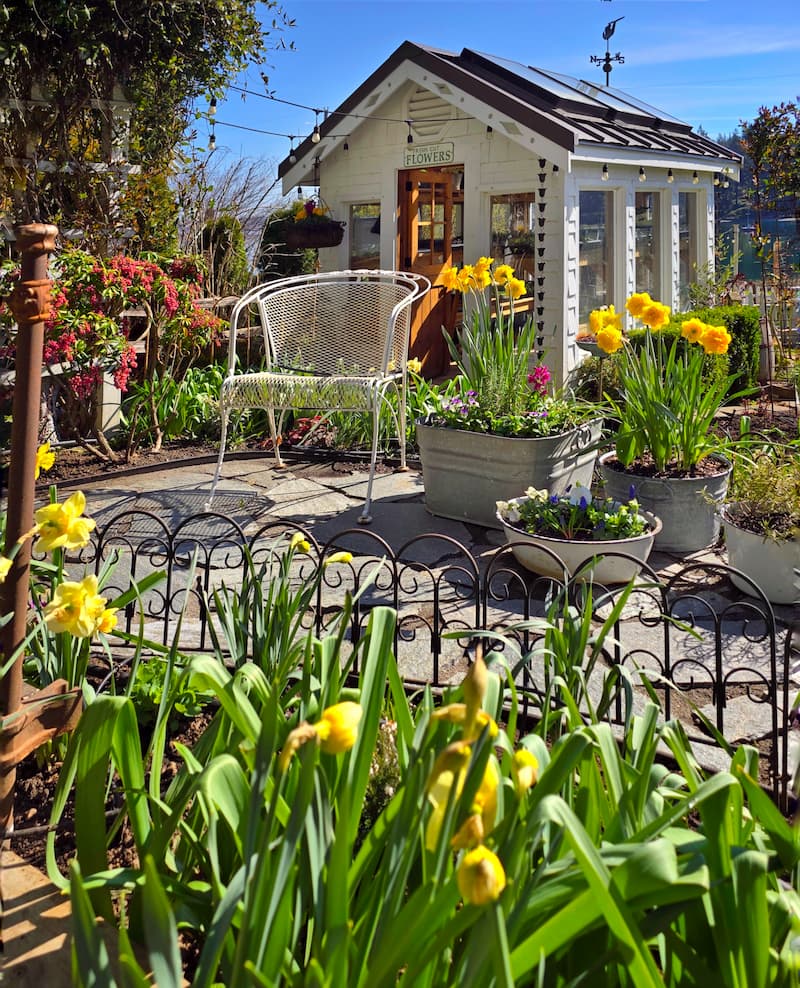
As an Amazon affiliate, I earn a commission from qualifying purchases at no additional cost to you. My blog also features other affiliate links for your convenience. Click here to read my privacy policy.
The Beauty of Spring in the Garden
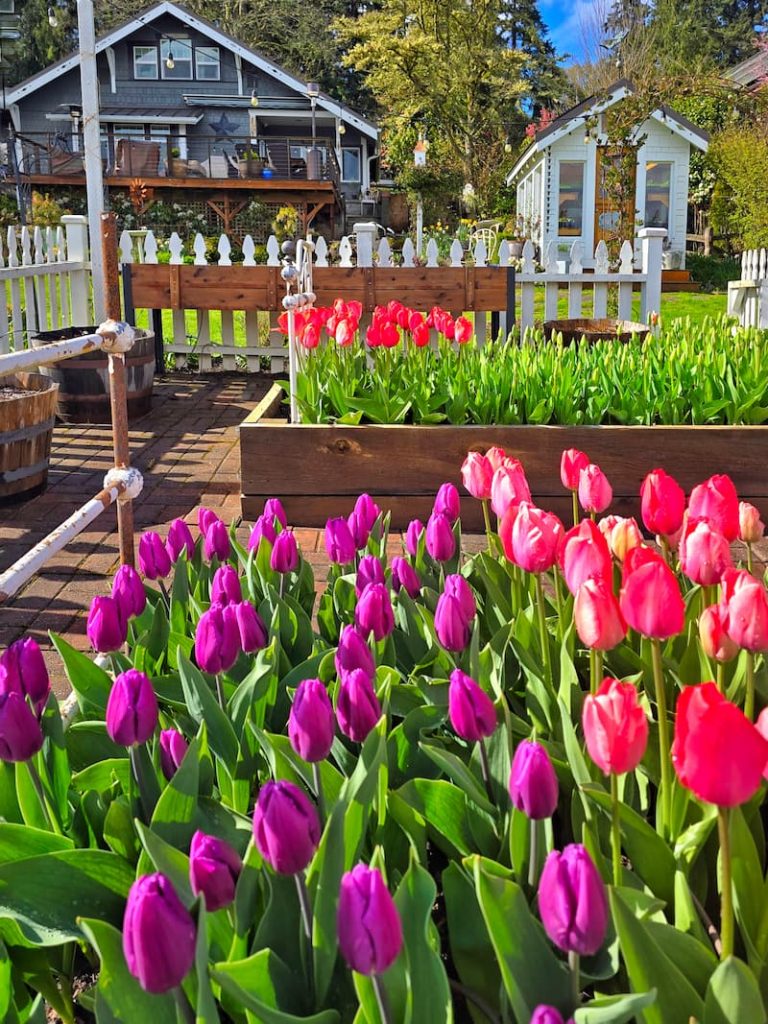
There’s nothing quite like watching the garden come back to life after a long winter. One day, everything feels bare and quiet — and then almost overnight, little signs of life begin to appear.
Tiny green shoots poke through the soil, flower buds start covering the branches, and suddenly the garden feels alive again.
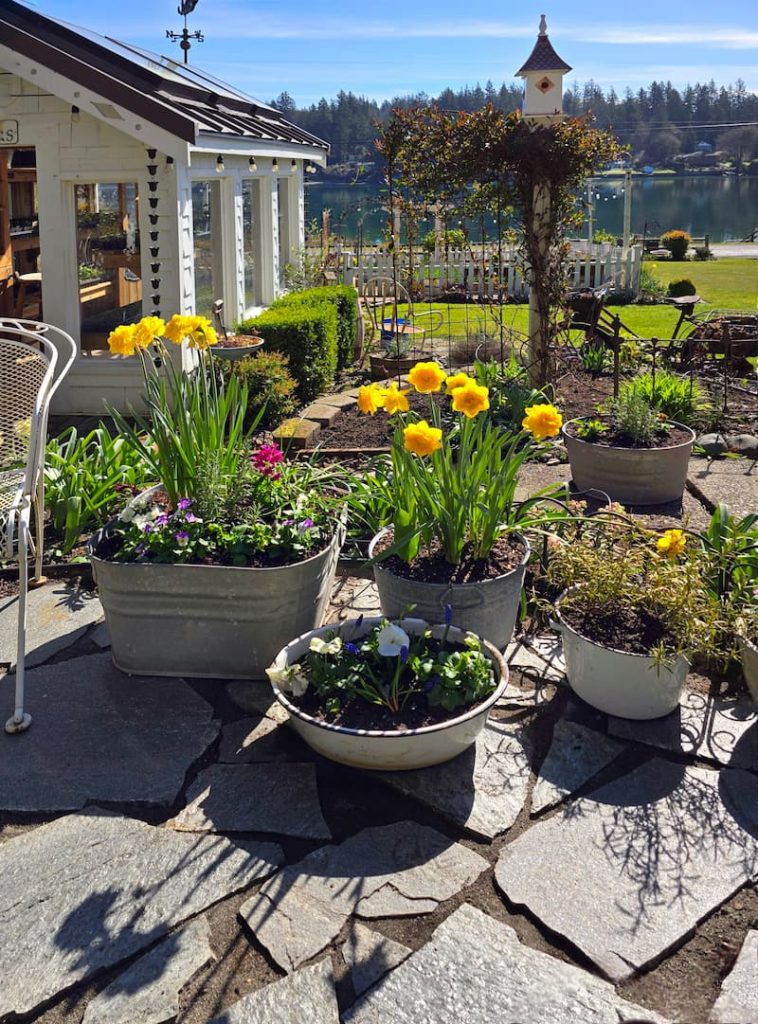
The colors in the garden feel brighter in early spring, maybe because we’ve missed them for so long. All those sunny yellows, soft purples, and fresh greens show up after months of gray skies and cold days.
Even the smell of the garden waking up.
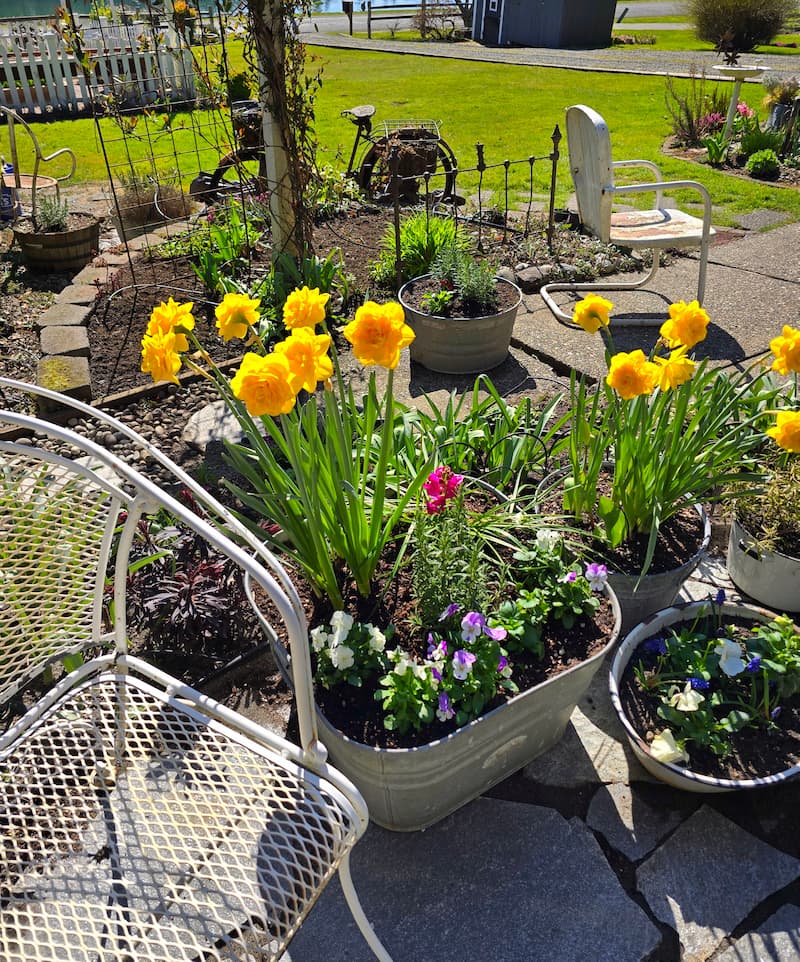
What I love most about this time of year is how fast everything changes. Every day there’s something new to see.
One morning it’s the first hellebore in bloom, the next it’s daffodils swaying in the breeze, or tiny leaves starting to open on the trees. It’s like the garden is excited to show off what it’s been working on all winter.
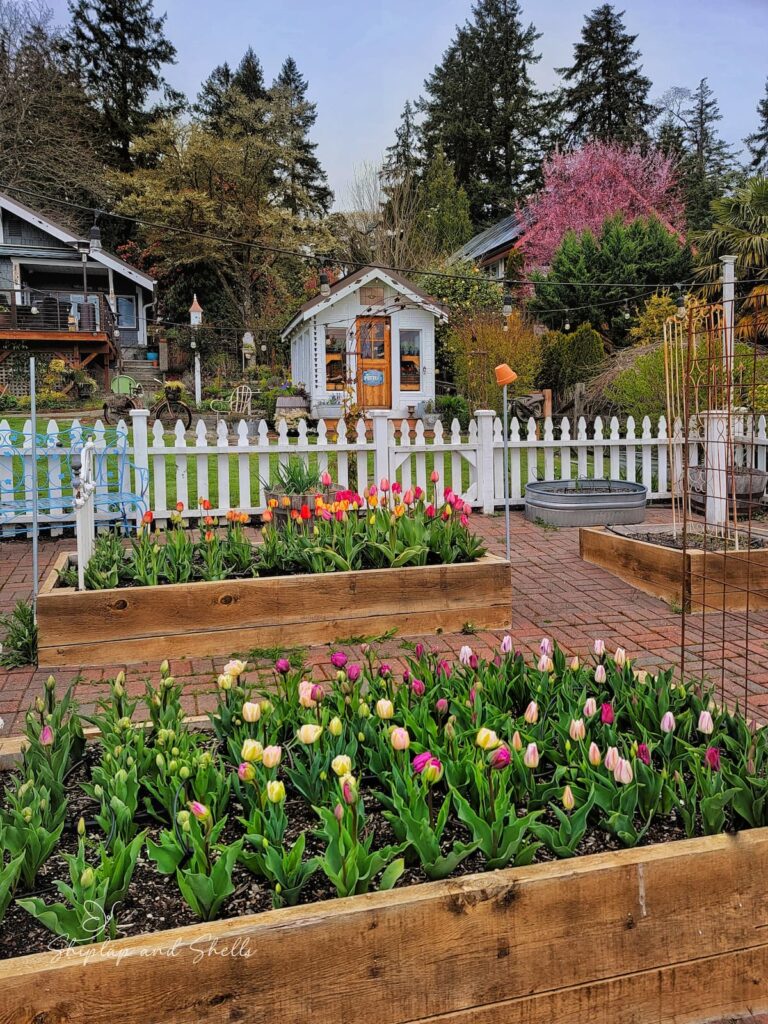
Spring really reminds me to slow down and enjoy those small moments, because they come and go so quickly. But while they’re here, it’s perfection.
What’s Blooming in My Garden Right Now
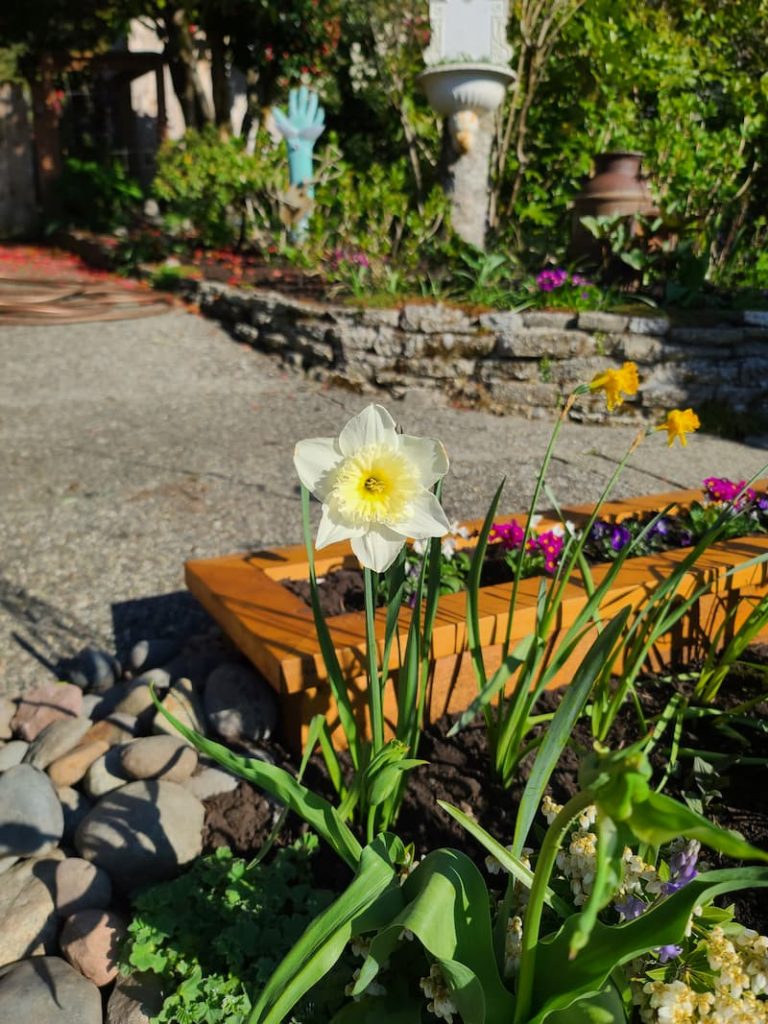
The early spring bulbs are what always steal the show this time of year. When the cheery yellow flowers from the daffodils, and the tulips, with their gorgeous range of colors, start blooming in early spring, they add an explosion of color to the garden.
Spring Bulbs
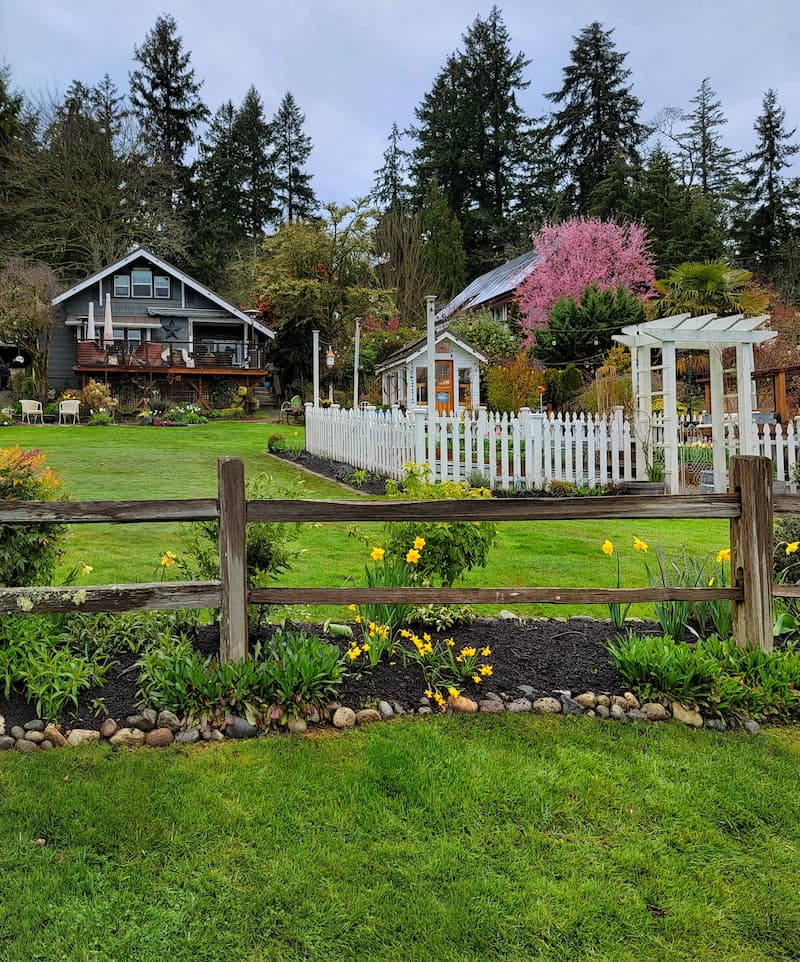
Daffodils
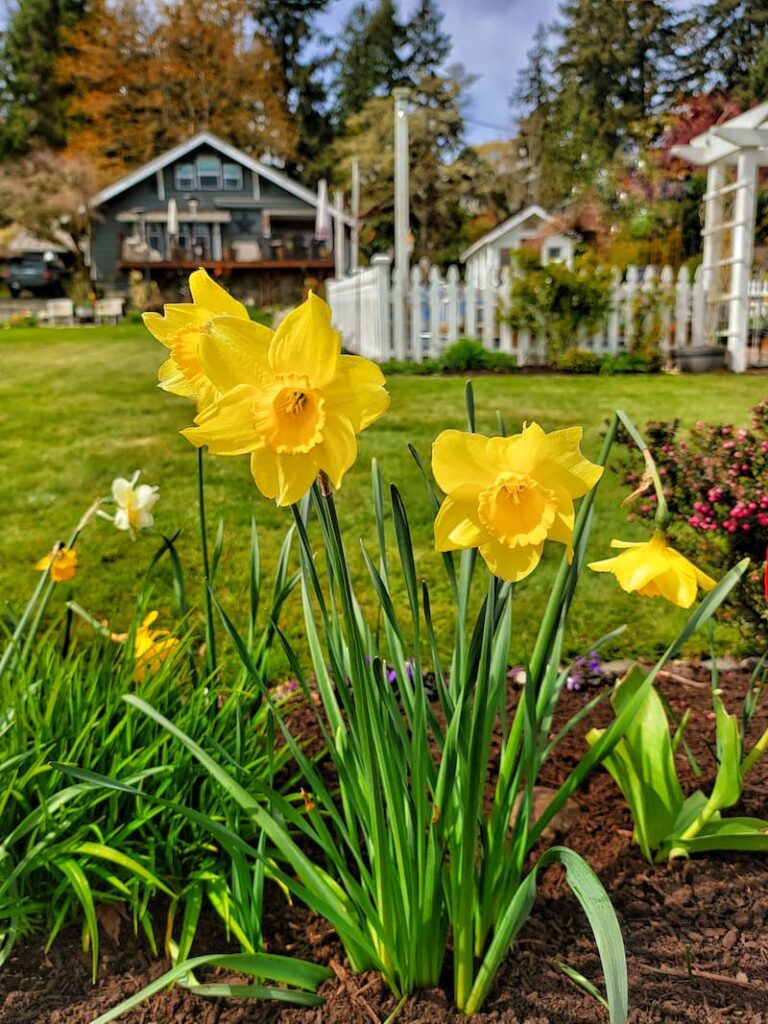
When you think of daffodils, do you picture bright and beautiful yellow flowers in your mind? I love how they look in an early spring garden. They truly say “Spring is Here”.
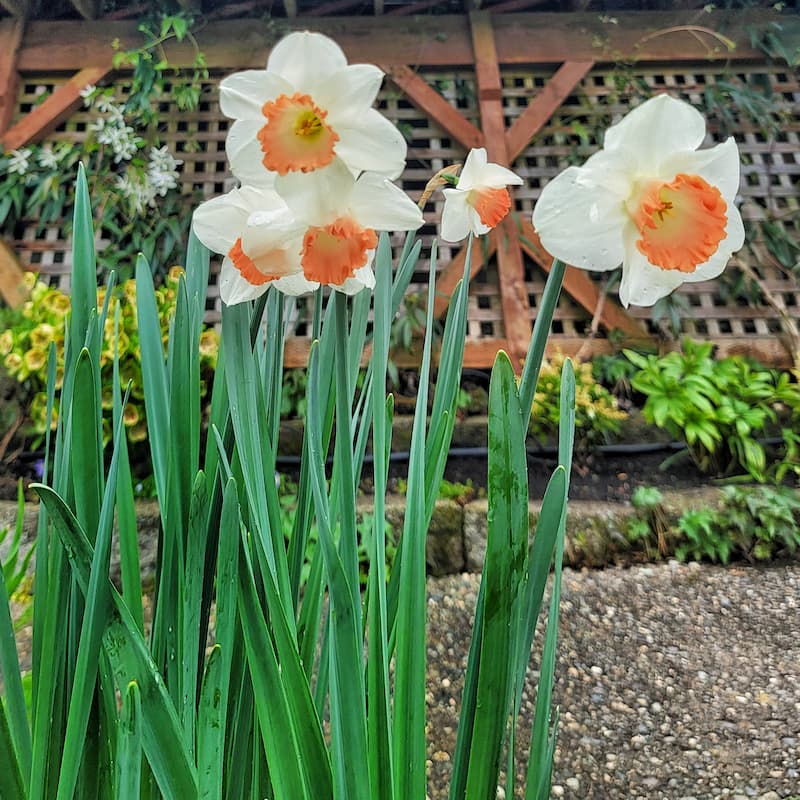
I love the fact that there are so many daffodil varieties that look different from the basic yellow blooms we’ve always been used to.
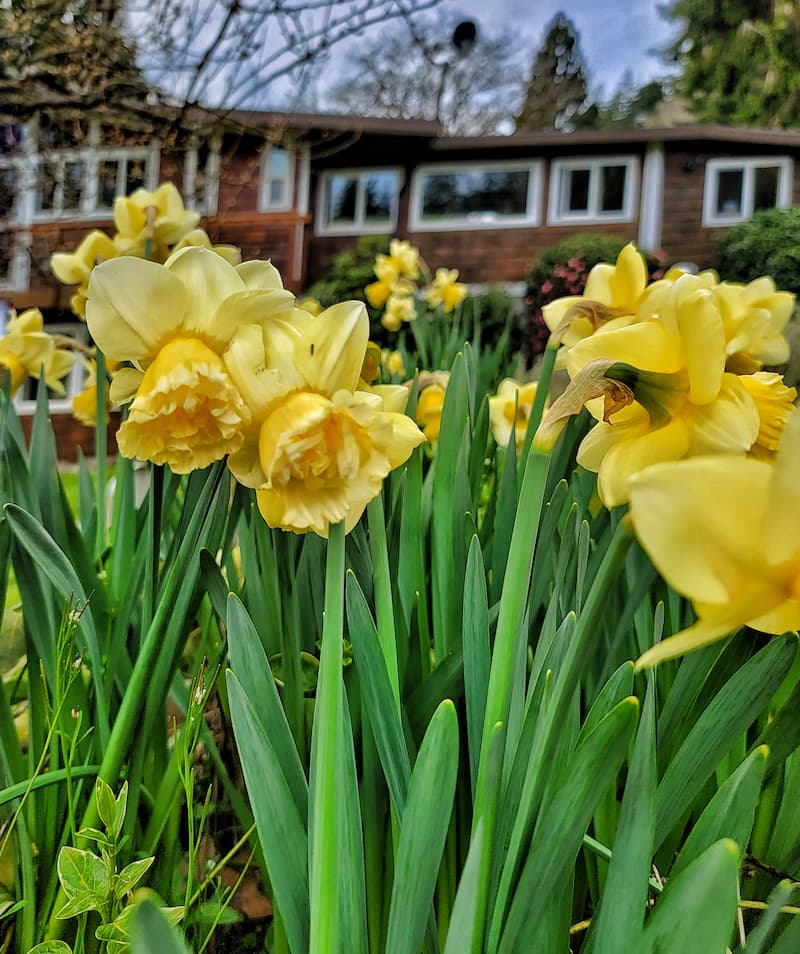
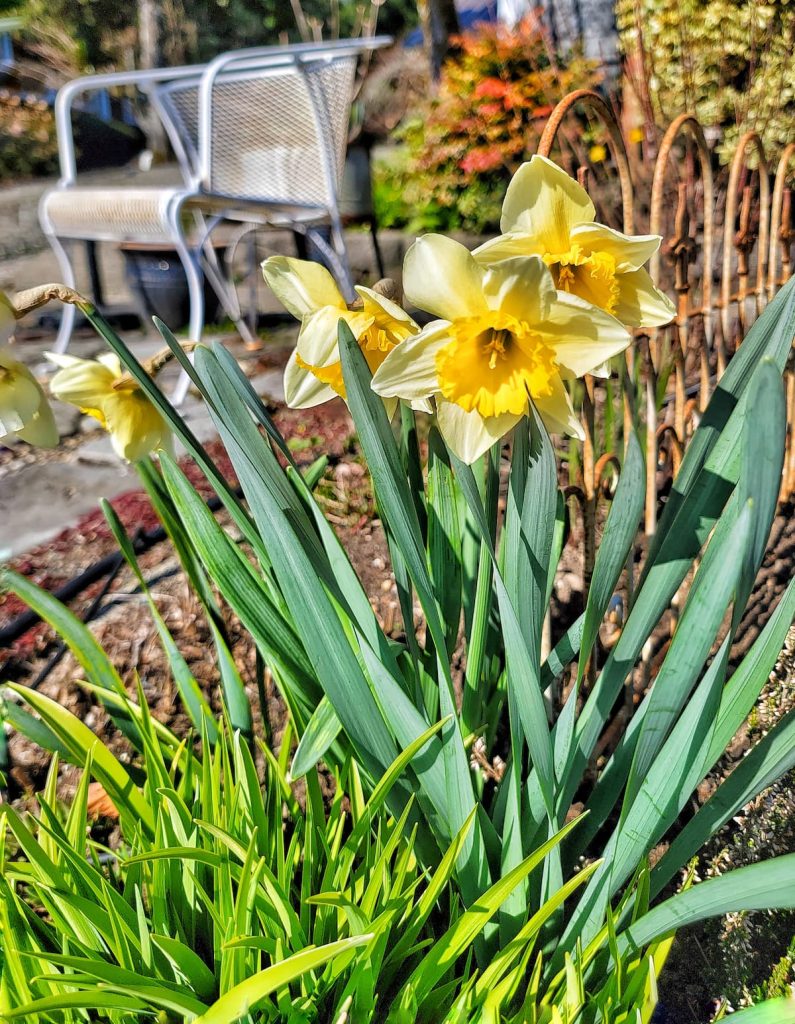
Because I have several different varieties of daffodils, these early spring beauties bloom at different times so there are always blooms growing in the early spring garden.
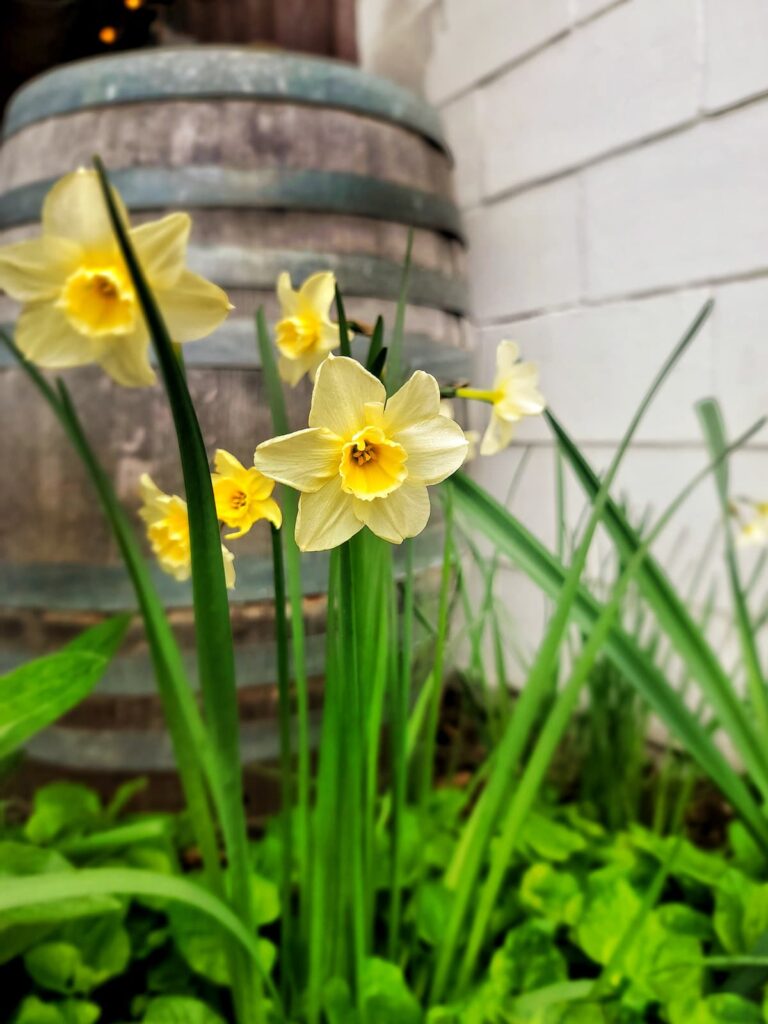
Daffodils help to attract pollinators to the garden, providing a vital food source for bees and butterflies in the early spring.
And the best part is that the deer leave them alone!
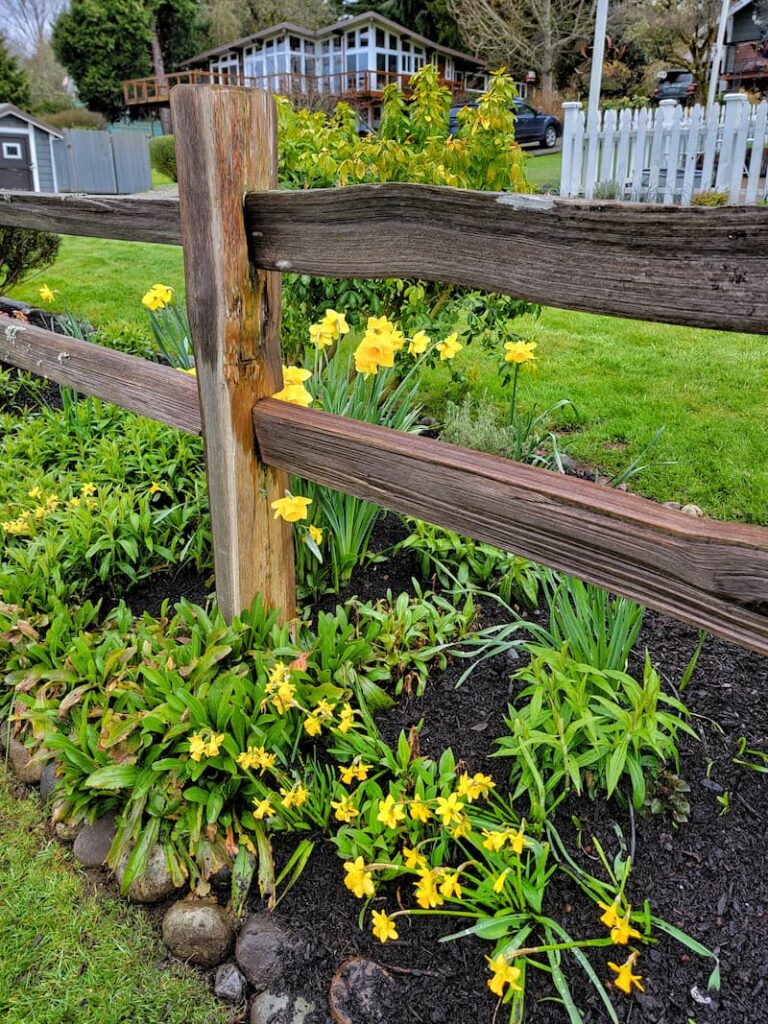
These sweet miniature daffodils are called Tête-à-Tête. They’re the perfect early spring bloom for your garden bed borders.
Tulips
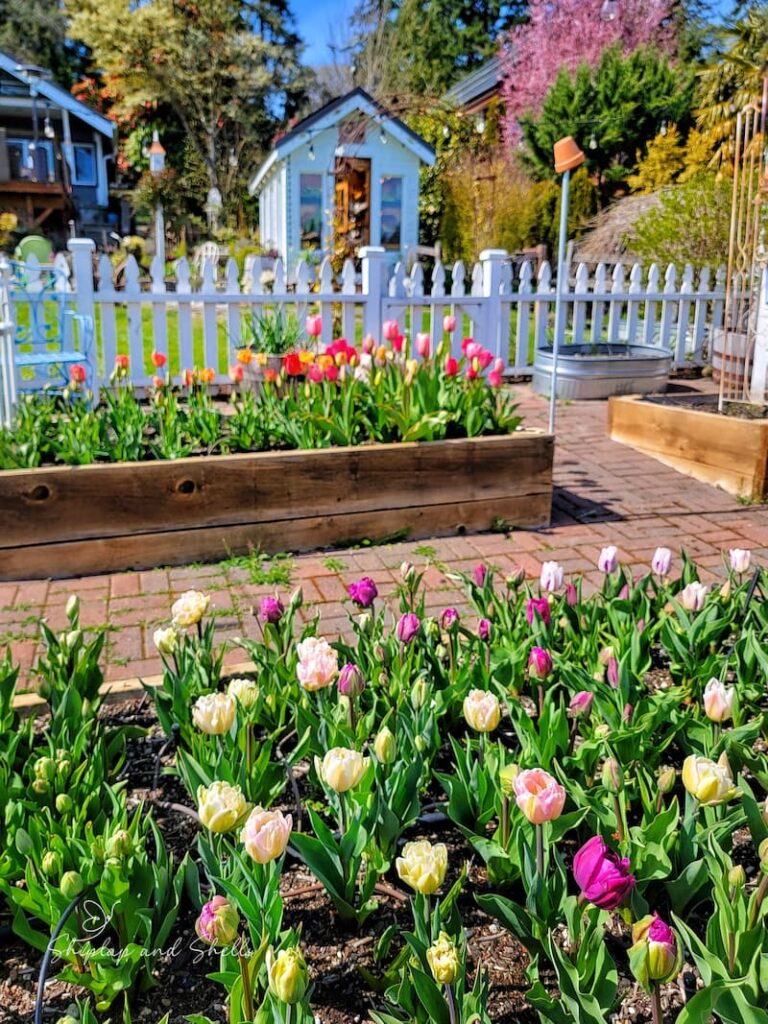
One of my favorite things to do in the fall is plant tulip bulbs in the raised beds, knowing that when early spring arrives, I’ll have beautiful blooms to cut and bring inside.
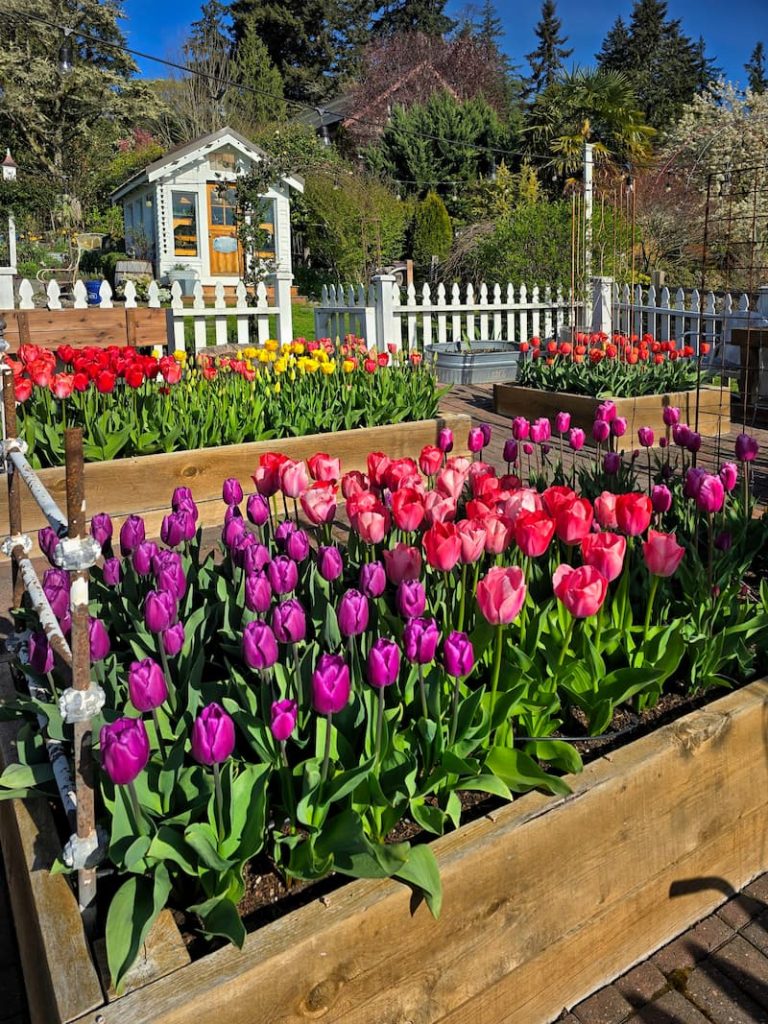
Filling a vase with fresh tulips from your own garden feels like the ultimate reward after a long winter.
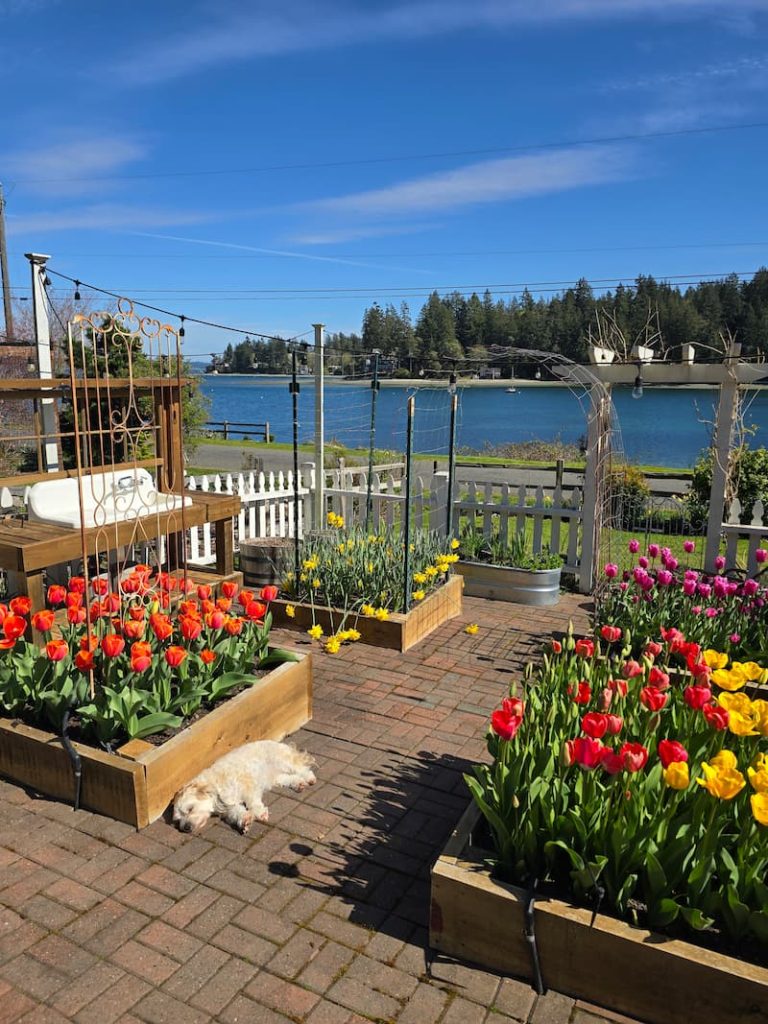
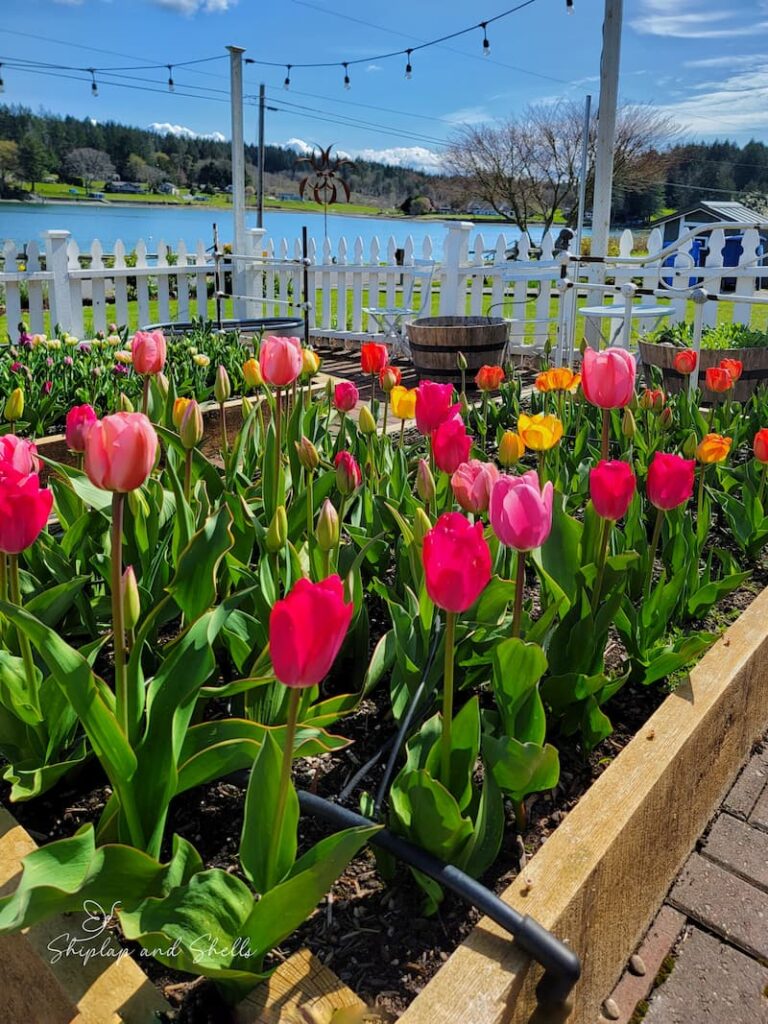
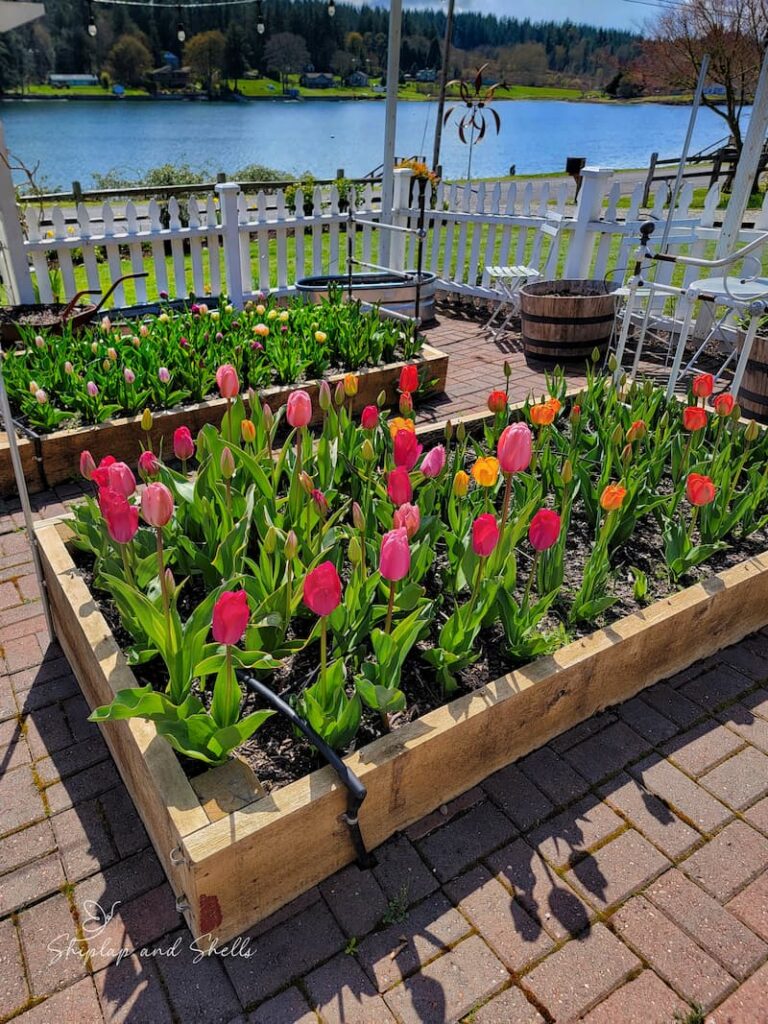
If you’re planting tulips specifically for cutting, try to choose varieties with long, sturdy stems and plant them in groups or rows in a spot that’s easy to reach.
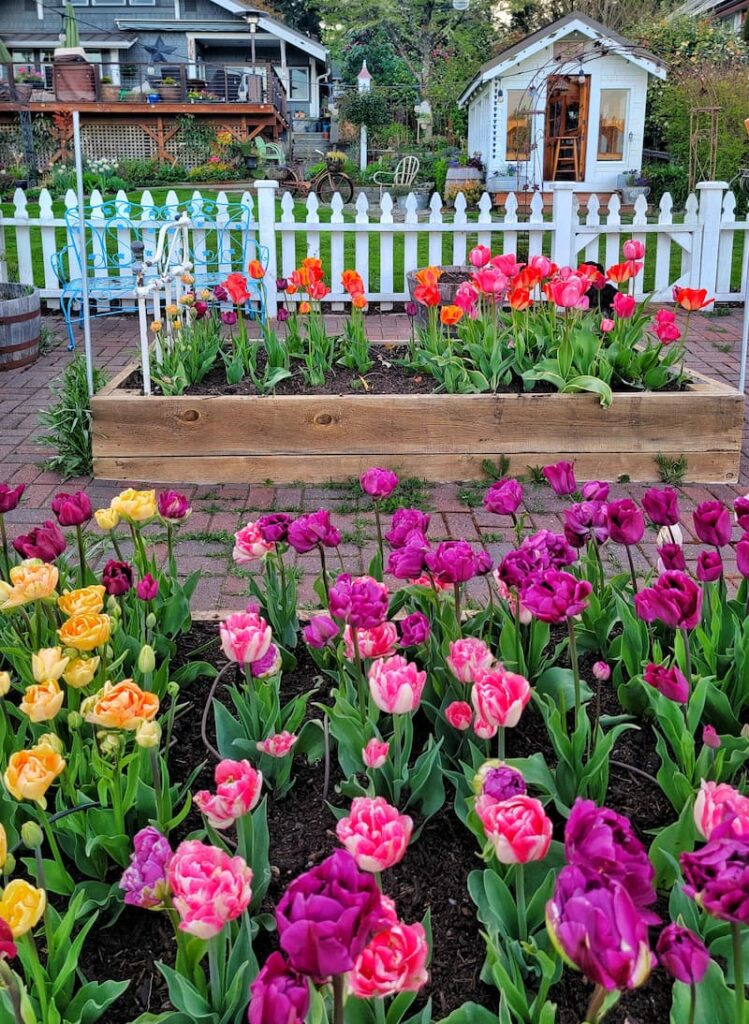
I also like to plant a mix of early, mid, and late-blooming tulips so I can enjoy fresh flowers for several weeks. And when planting in the fall, I always remind myself to plant more bulbs than I think I’ll need — because once they bloom, I’ll want to cut them for the house and leave plenty in the garden to enjoy outdoors.
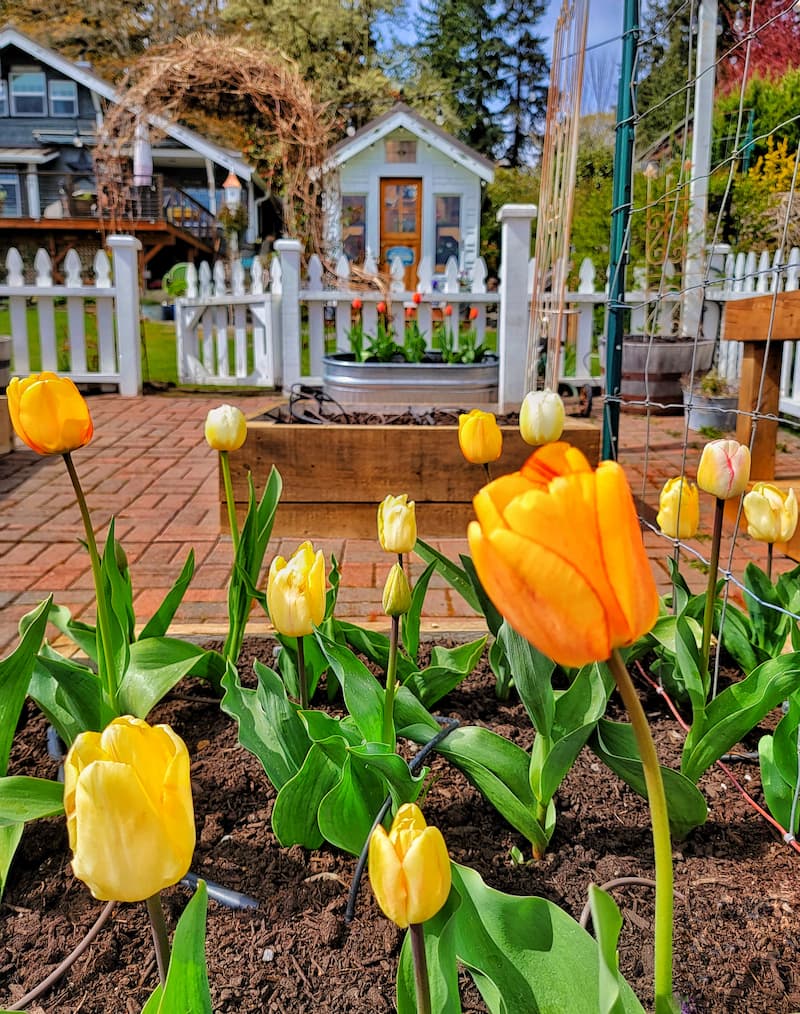
If you’ve never planted tulips for cutting, I highly recommend giving it a try. It’s an amazing feeling to walk out on a crisp spring morning and gather a handful of colorful blooms for the kitchen table.
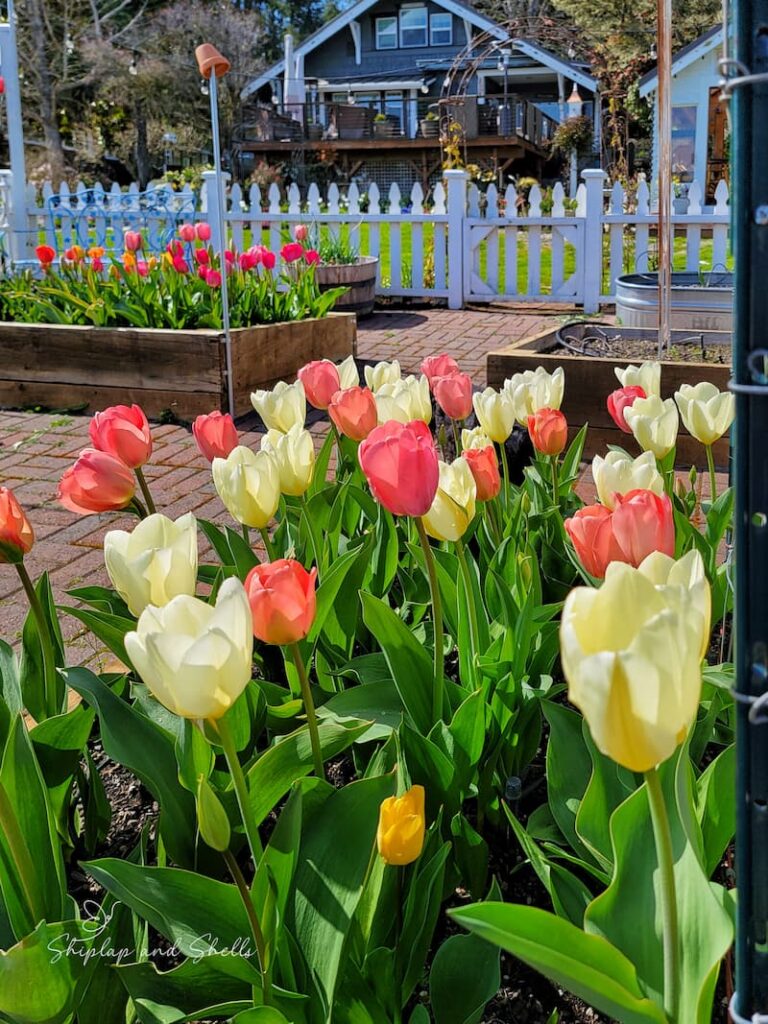
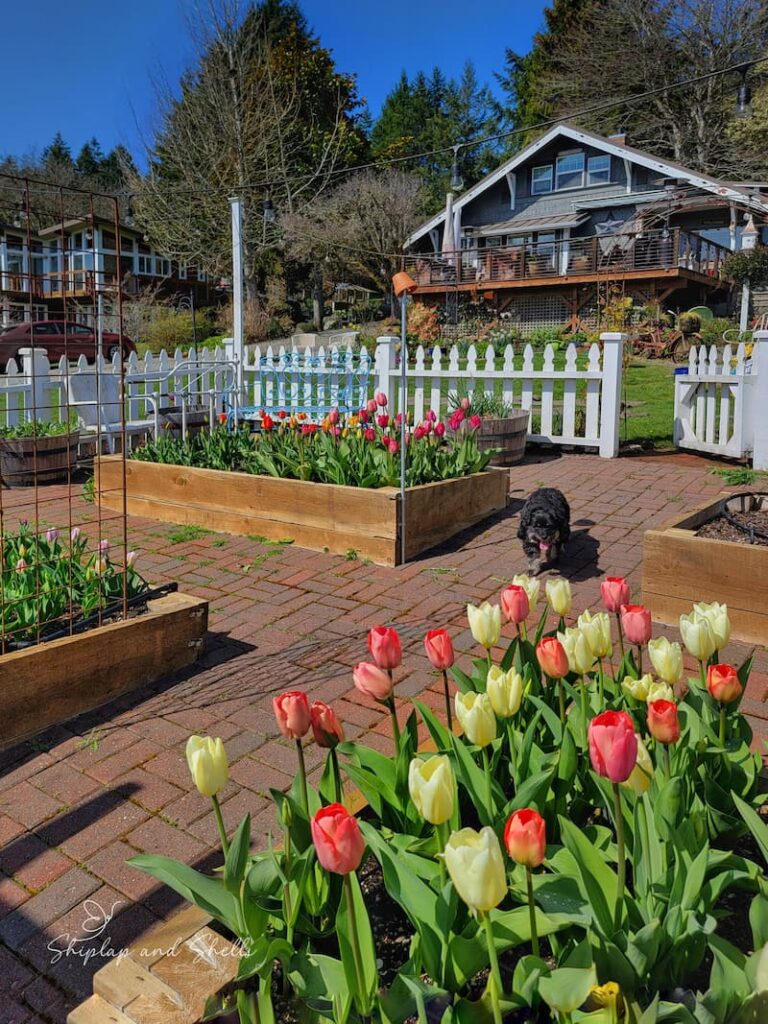
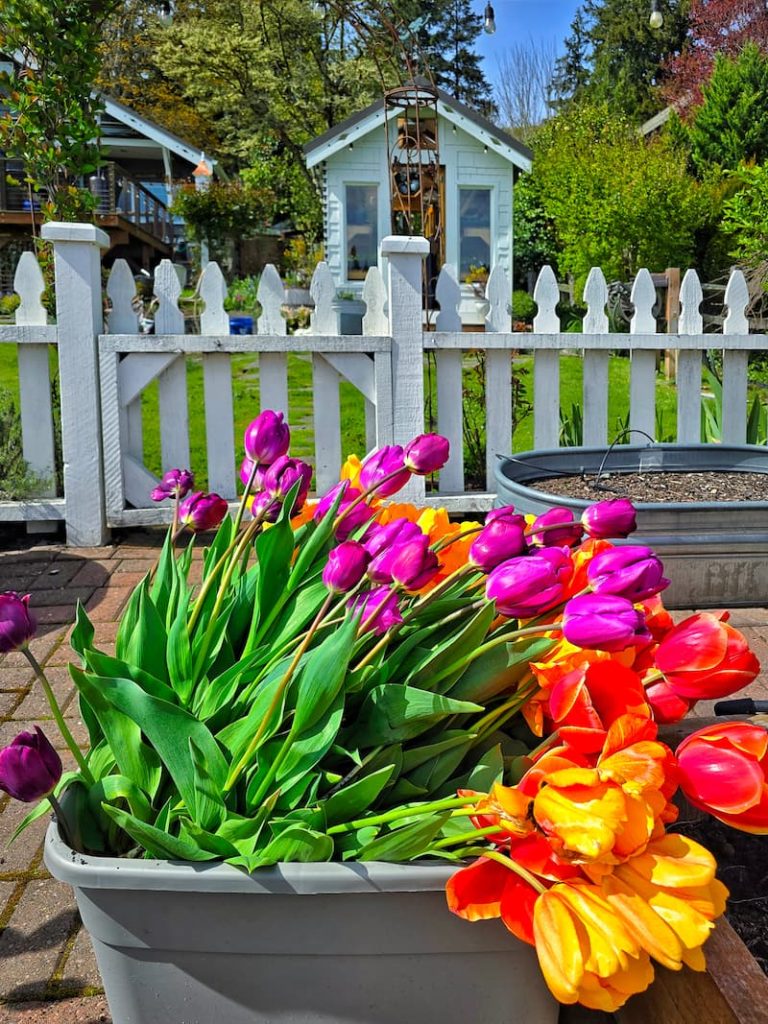
When I harvest these spring tulips for spring flower arrangements, I pull the entire bulb out of the ground. This will ensure that the stem is longer for the purpose of cutting flowers.
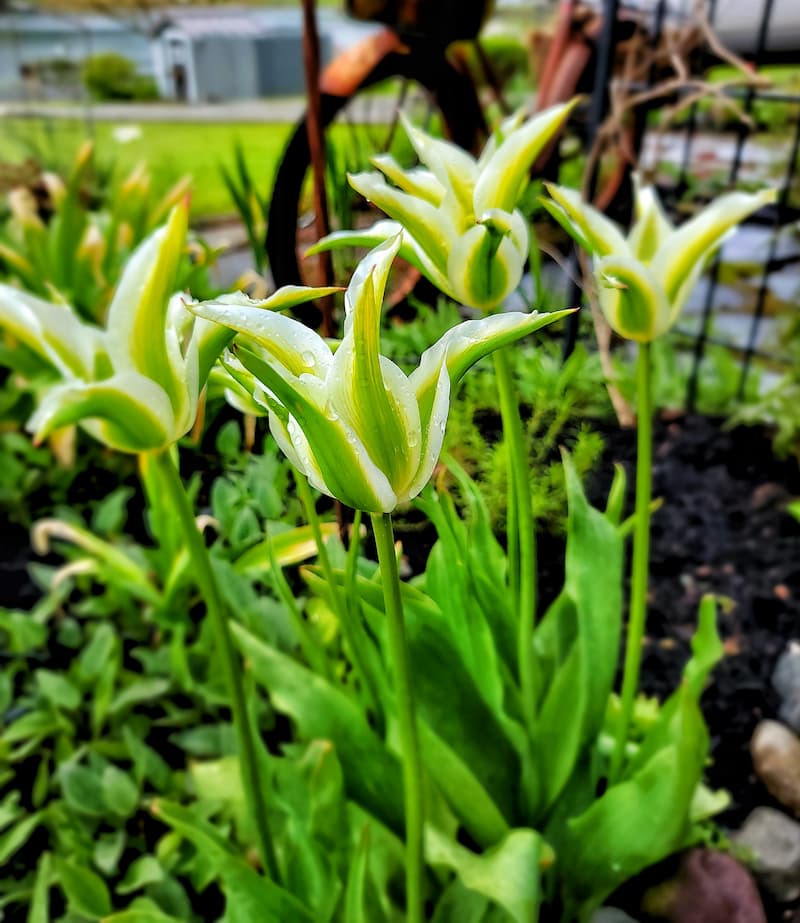
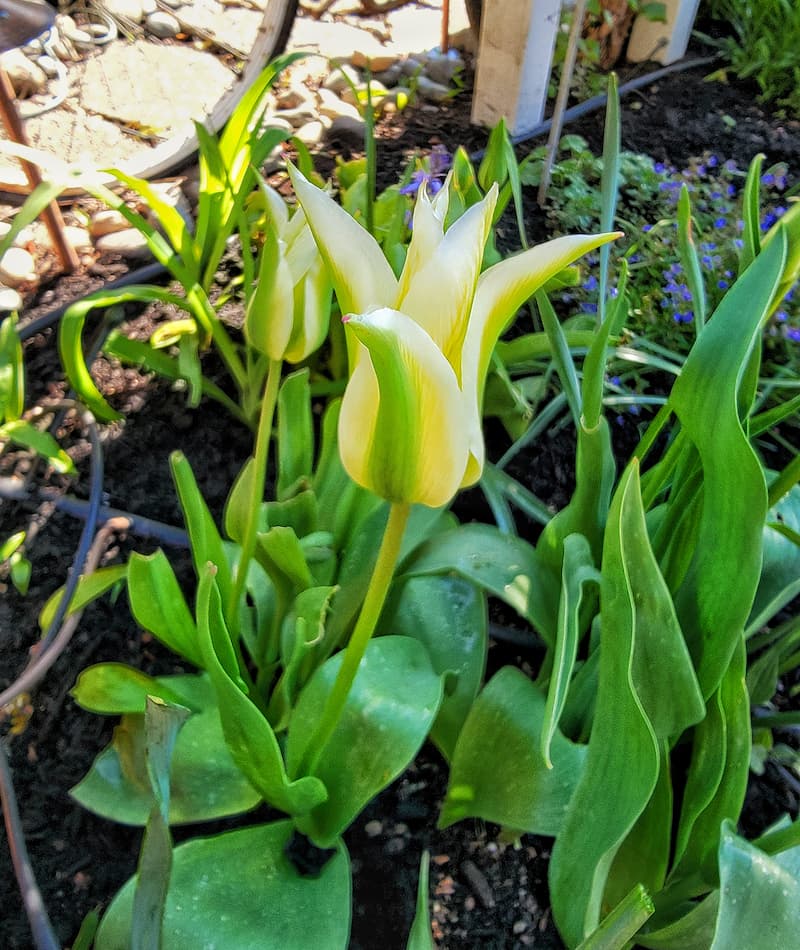
I do have some other tulips in my cottage garden that I don’t grow as cut flowers. This is one of my very favorite varieties of tulips, Green Star.
Crocuses
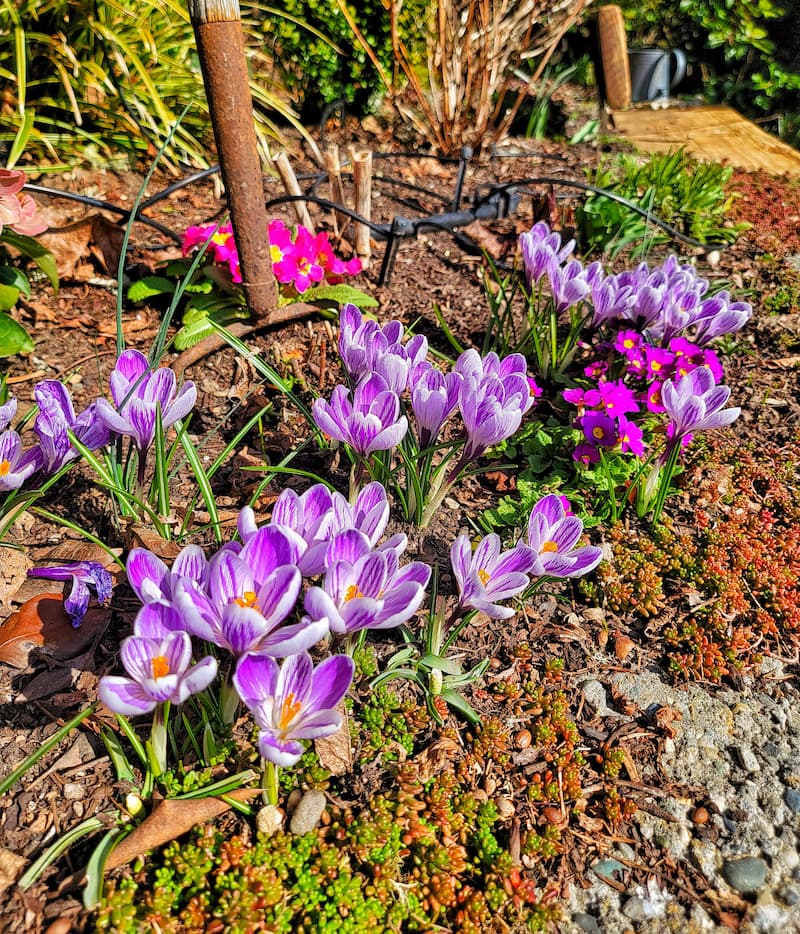
Crocuses are usually the very first blooms to show up, sometimes even poking through a light dusting of snow. They’re small but mighty, scattered across the garden just when we need a burst of cheer the most. They usually bloom for about three weeks.
Hyacinths

These spring bulbs add lots of color and make such a statement in the garden when not much of anything is happening outdoors in March.
The flowers themselves are so cheerful with their dense clusters of little blooms in shades of pink, purple, white, and even soft yellow.
This gorgeous mix of colorful hyacinth bulbs from Breck’s Bulbs is called Monet Hyacinth Mixture and give the cottage garden such a gorgeous pop of color in March.
Early Perennials
Hellebores
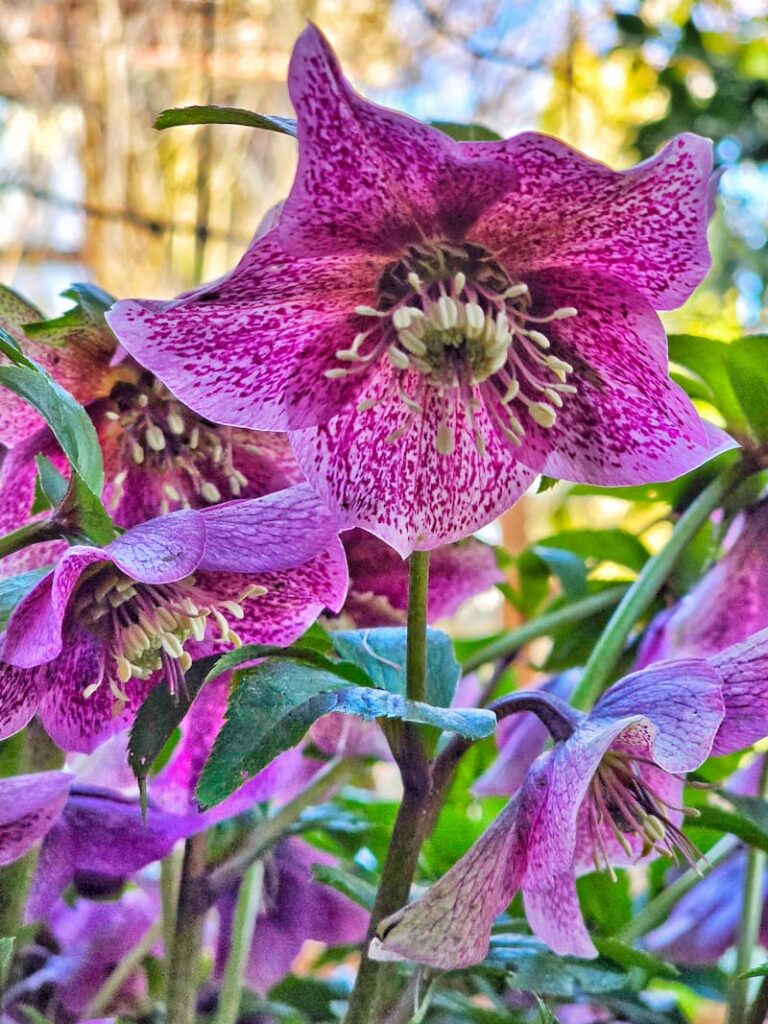
Also called lenten roses, hellebores are officially the first flowering perennial of spring in my cottage garden.
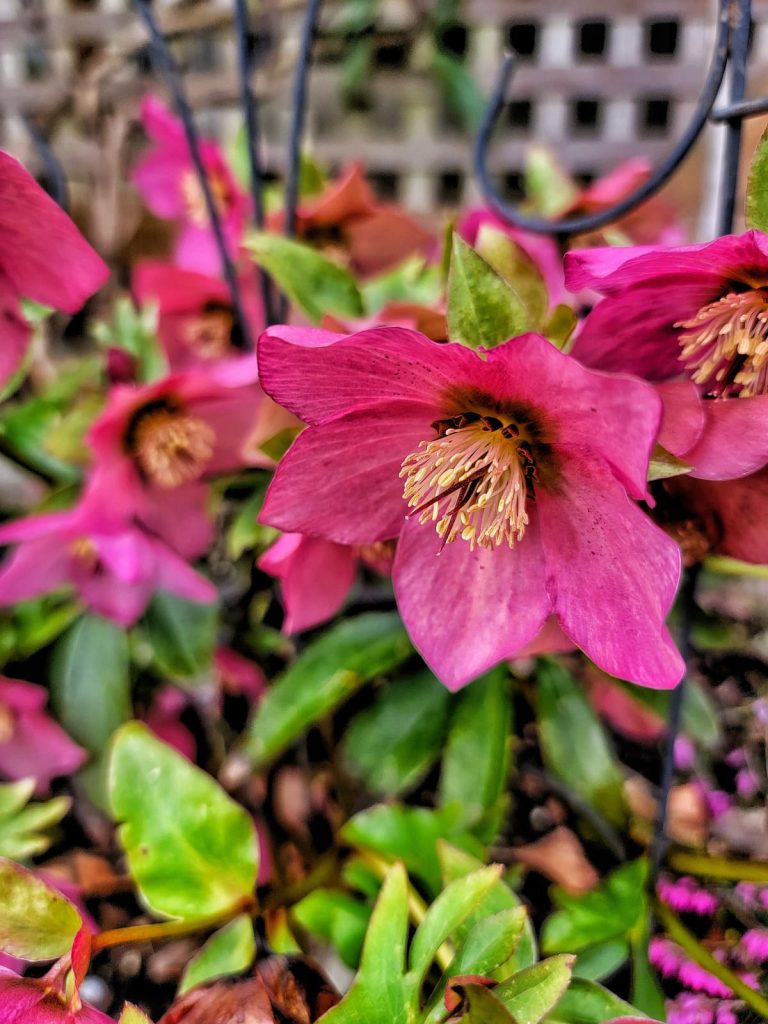
They are the best flowers to plant for winter and early spring interest and bloom for months. Hellebore’s unique blooms and ferny foliage are so welcoming this time of the year and they make beautiful flower bouquets.
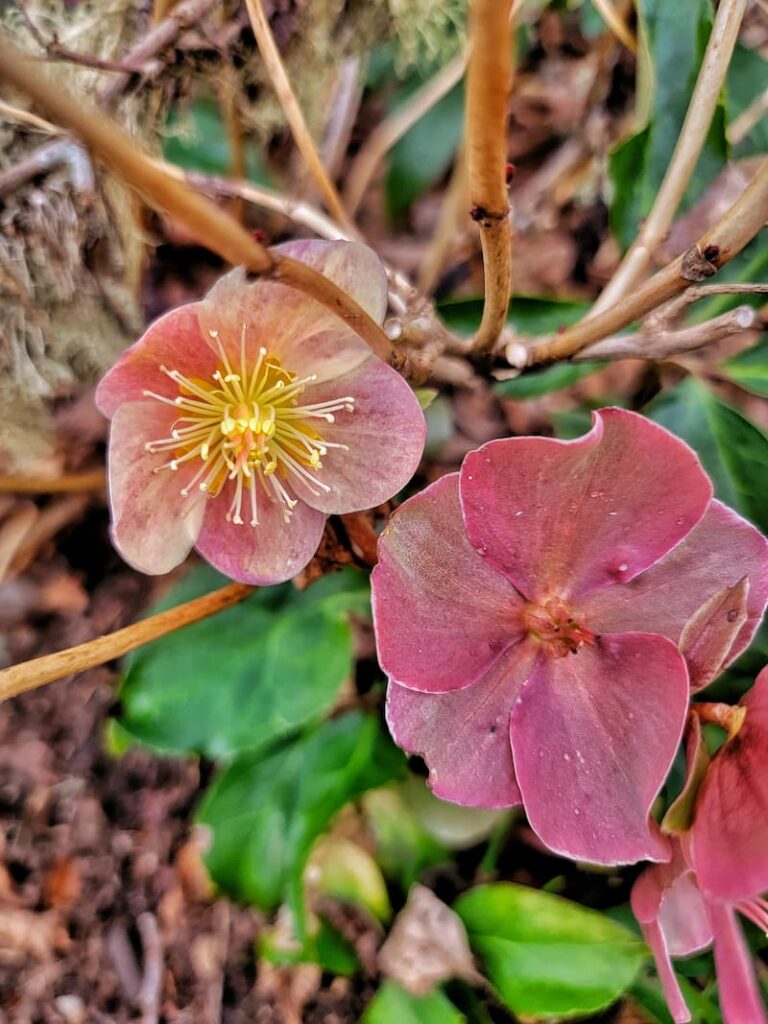
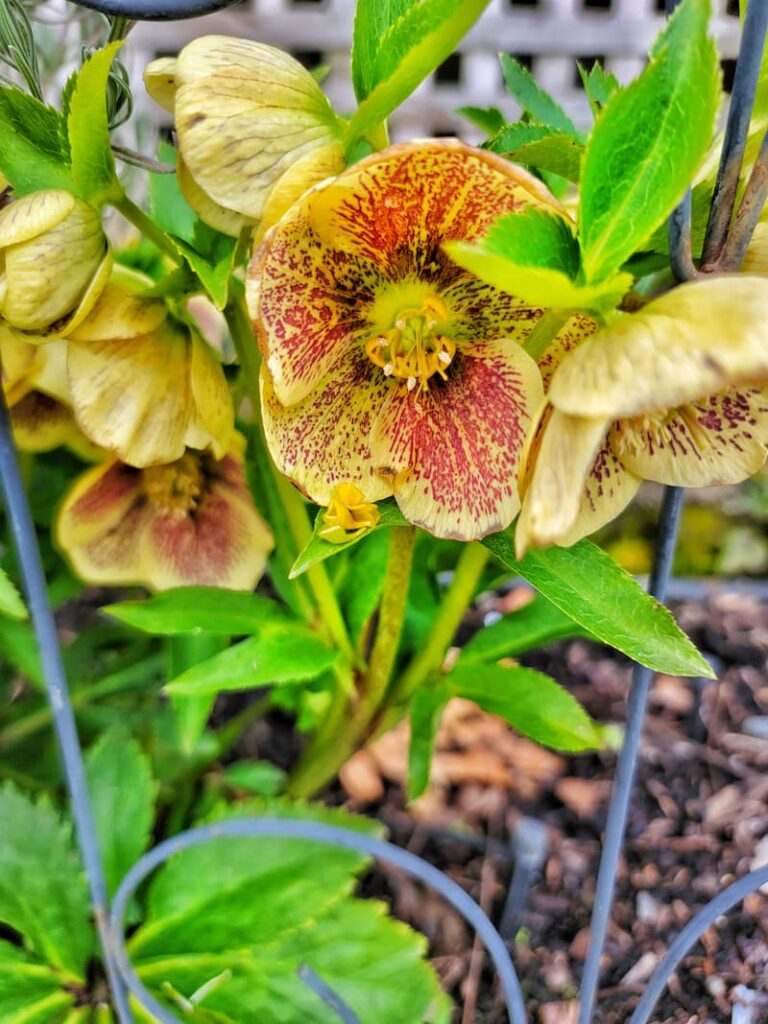
Hellebores don’t like full sun and should be planted in shady areas.
Primroses
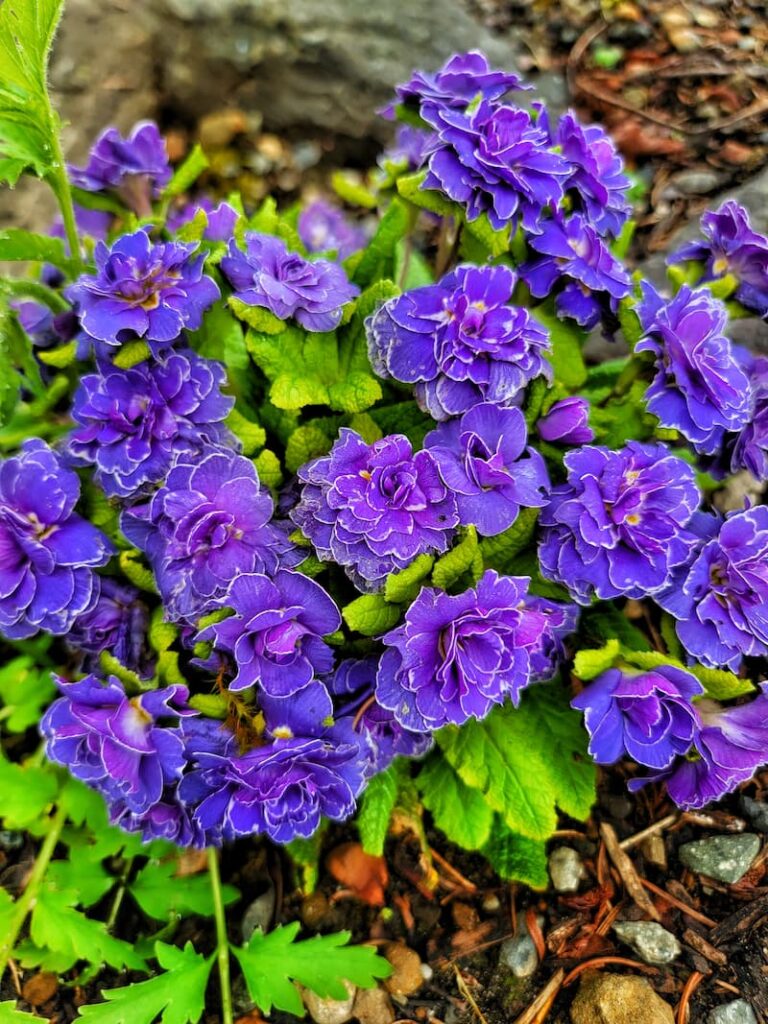
When I first planted primroses in the early spring garden, I had no idea they were perennial plants in hardiness zone 8b. Much to my surprise, they came back the following year, bigger and better.
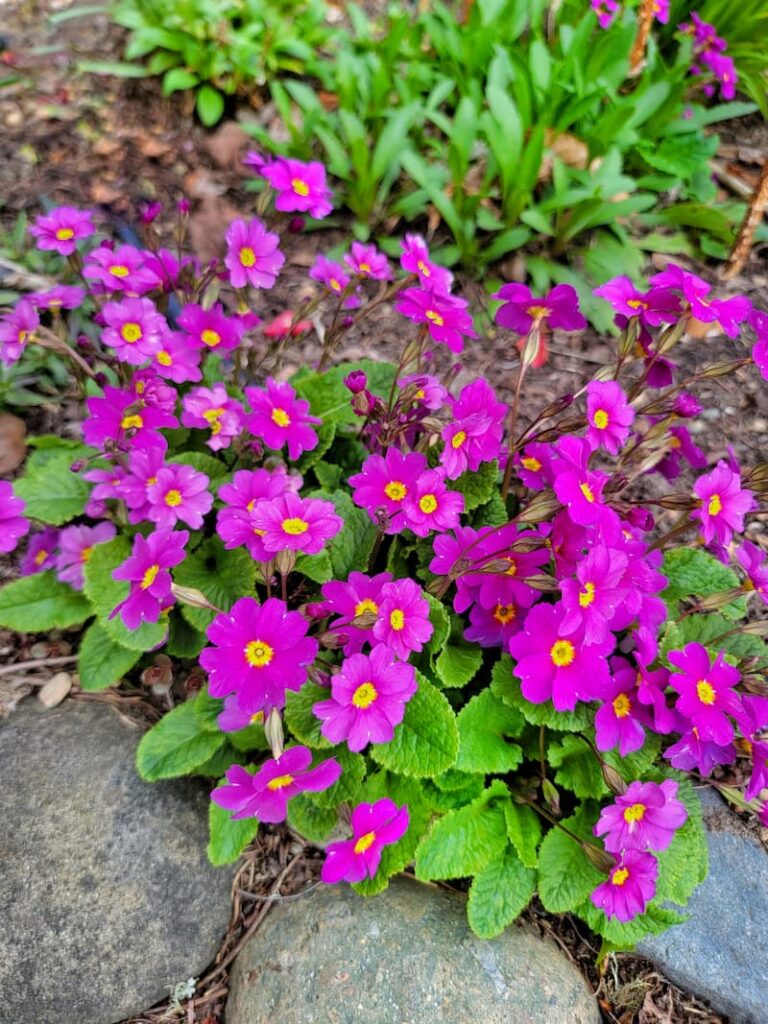
These early spring blooming perennial flowers make such a gorgeous statement in window boxes, flower containers, or garden bed borders.
I divide my primroses every year after they bloom to keep them manageable.
Ranunculus
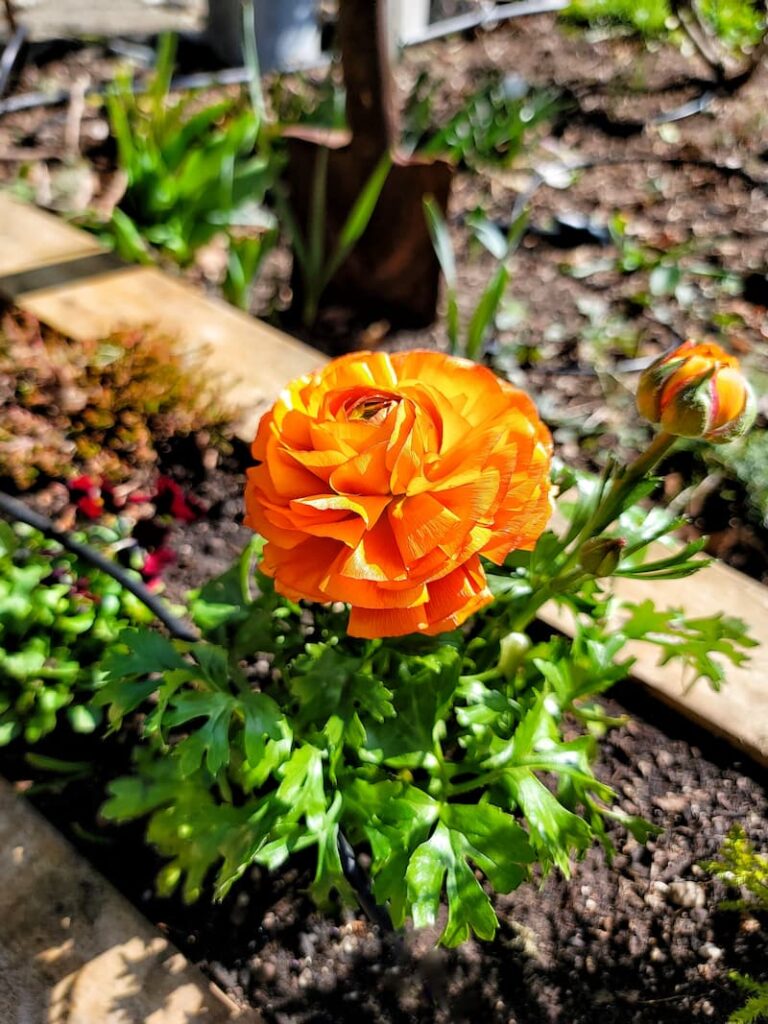
Several spring annuals can still thrive in the cold early spring temperatures. I found this gorgeous color of ranunculus at a local garden center and fell in love.
Japanese Rose

One of the happiest sights in my early spring garden is the bright yellow blooms of the Japanese rose, also known as Kerria japonica. These flowers look like little pom-poms of sunshine, and they always seem to bloom right when the garden needs an extra pop of cheerful color.
They’re perfect for filling in shady spots or softening the edges of the garden with their loose, natural shape. I have mine growing near a fence, and every year it seems to spill over a little more — in the best way possible.
Pasqueflower

Pasqueflowers are one of those special early spring flowers that always feel like a little hidden treasure in the garden. They have soft, fuzzy foliage and delicate bell-shaped flowers in shades of purple, lavender, and sometimes white or pink.
These flowers love sunny spots with well-drained soil and are perfect for rock gardens or edges of flower beds where they can really shine. They’re also drought-tolerant once established and come back year after year, getting a little bigger and better with time.
Japanese Pieris
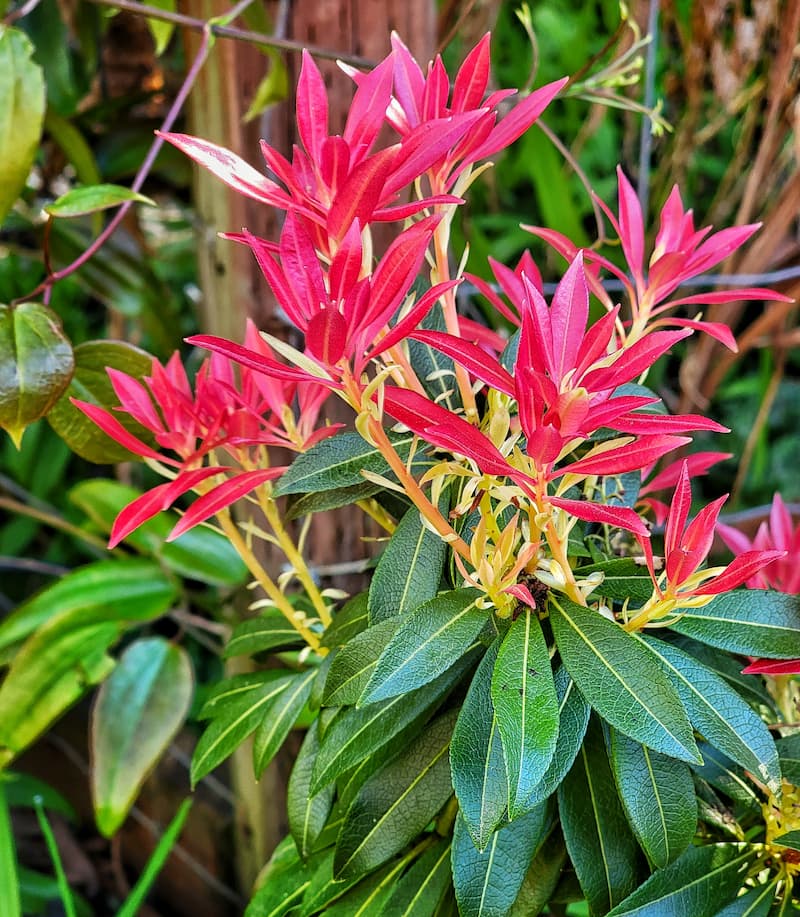
Also known as Pieris japonica, this shrub quietly steals the show in early spring. Just as the garden starts to wake up, it’s covered in delicate clusters of small, bell-shaped flowers that almost look like tiny strings of pearls hanging from the branches.
The flowers come in soft shades of white, pink, or blush, and they last for weeks, adding a beautiful, graceful feel to the garden. Even when not in bloom, Japanese Pieris has glossy evergreen leaves that stay beautiful year-round. In early spring, the new growth often appears in shades of copper or red, adding even more color and interest.
They’re also deer-resistant and do well in part shade, making them a great choice for woodland edges or under taller trees.
Spring Annuals
Pansies and Violas
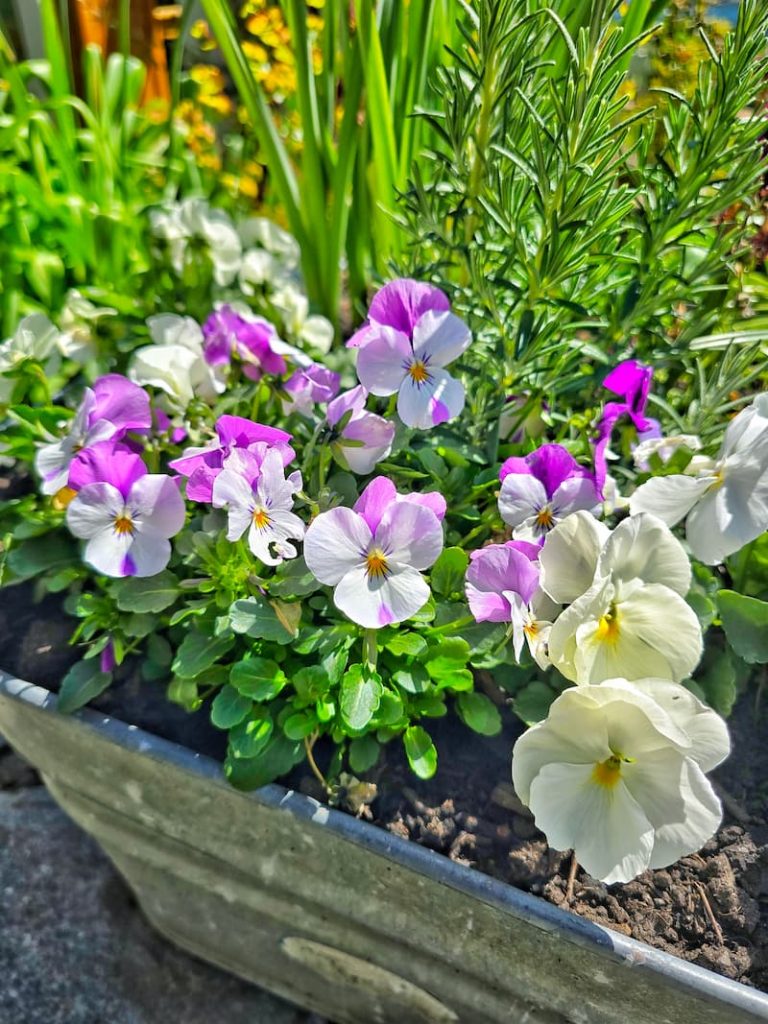
Many of these cold-hearty annuals were planted in fall and are just now coming back to life now that spring is here again.
I love tucking pansies and violas into pots by the front door, window boxes, and even in small garden beds where I need a pop of color while I wait for other plants to wake up.
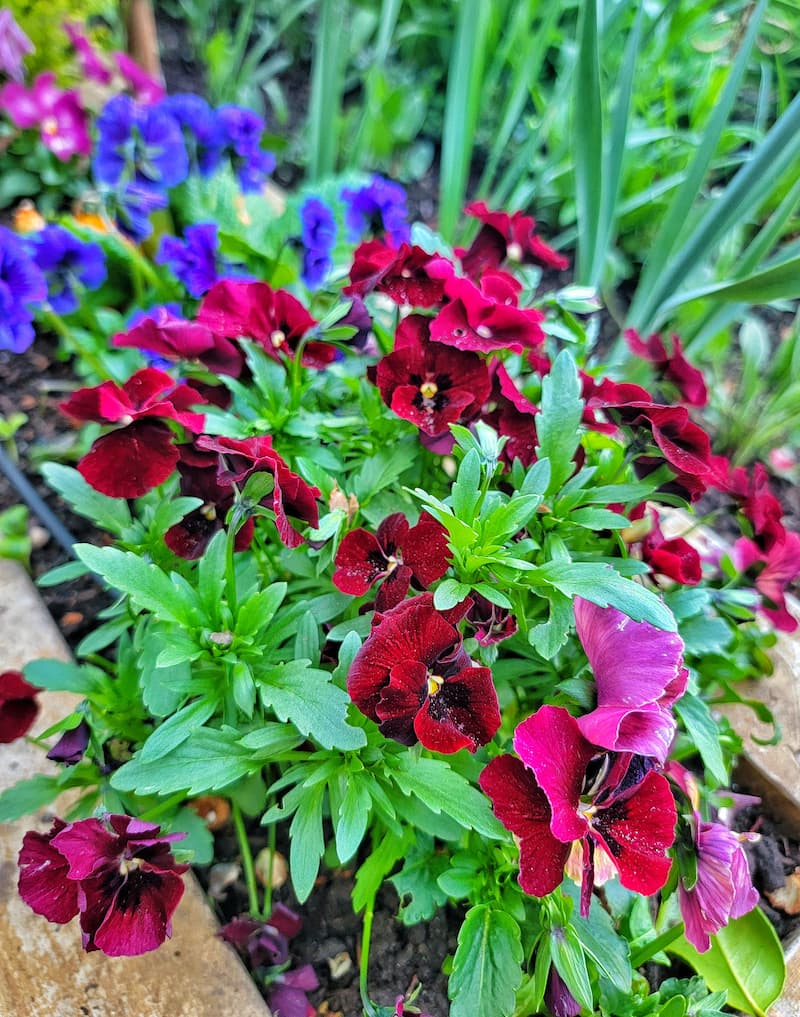
They come in just about every color you can imagine — soft pastels, deep velvety purples, sunny yellows, and fun mixes that look hand-painted.
Violas are smaller and often bloom a bit longer than pansies, but both are tough little plants that can handle chilly early spring days. They’re also great for filling gaps in the garden and adding color where other plants haven’t quite started yet.
Spring Blooming Trees and Shrubs
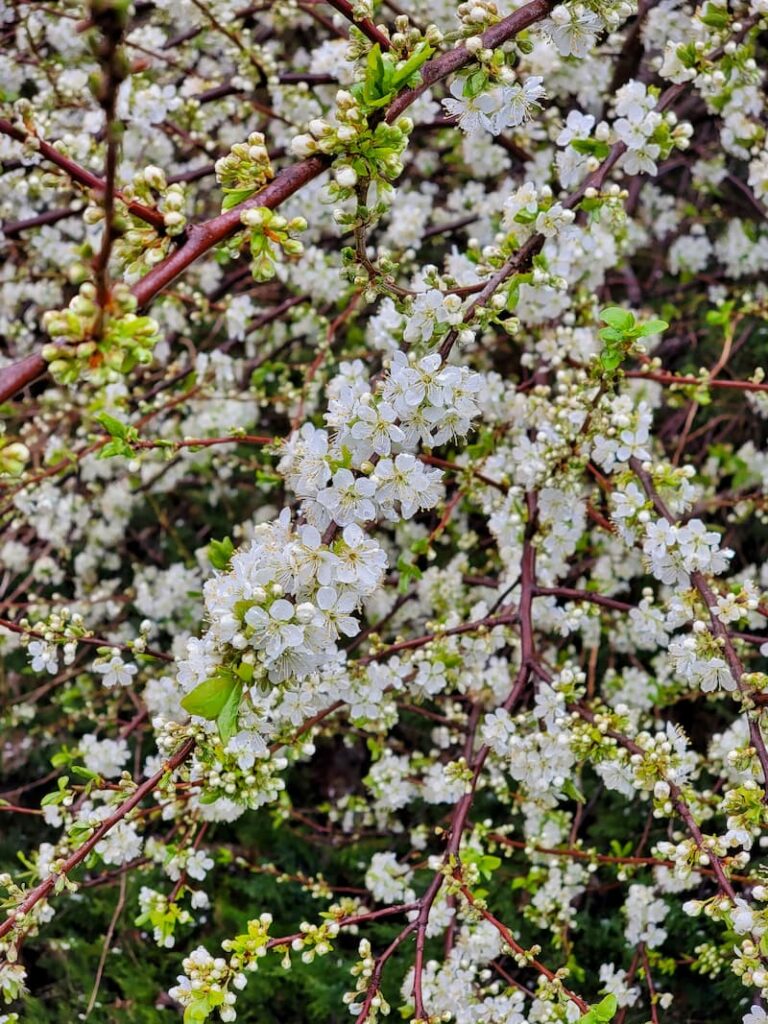
As the days get warmer and longer, the trees burst into colorful flowers, adding even more beauty to the early spring garden.
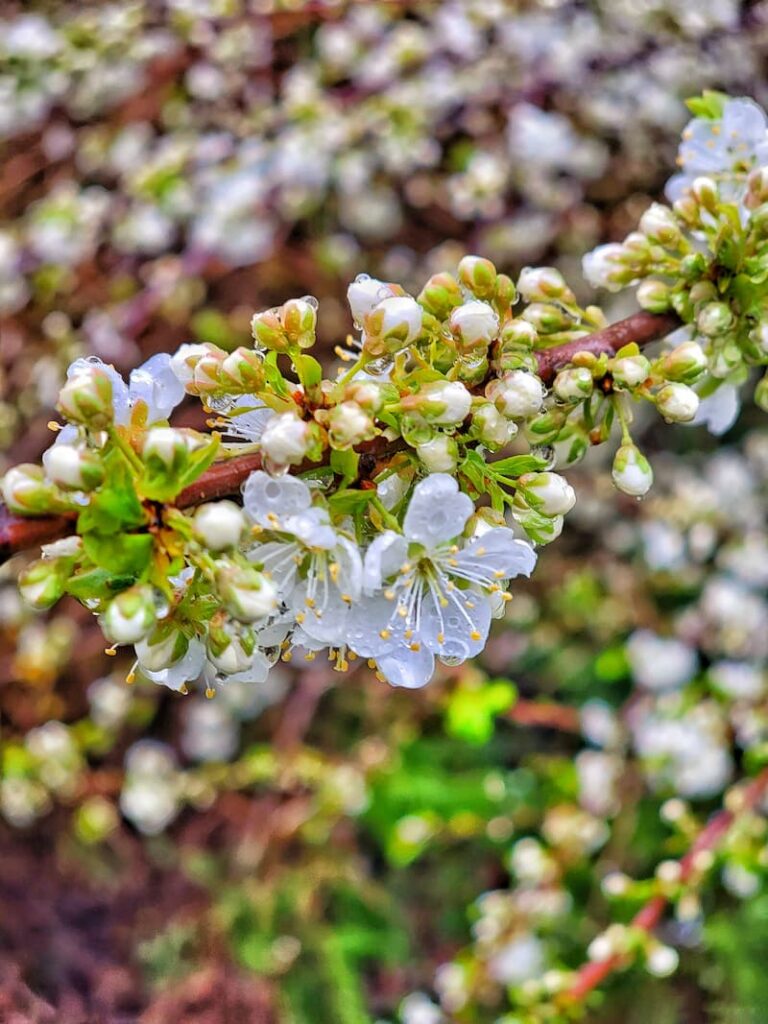
Early spring white flowering trees covered in raindrops are a beautiful sight.
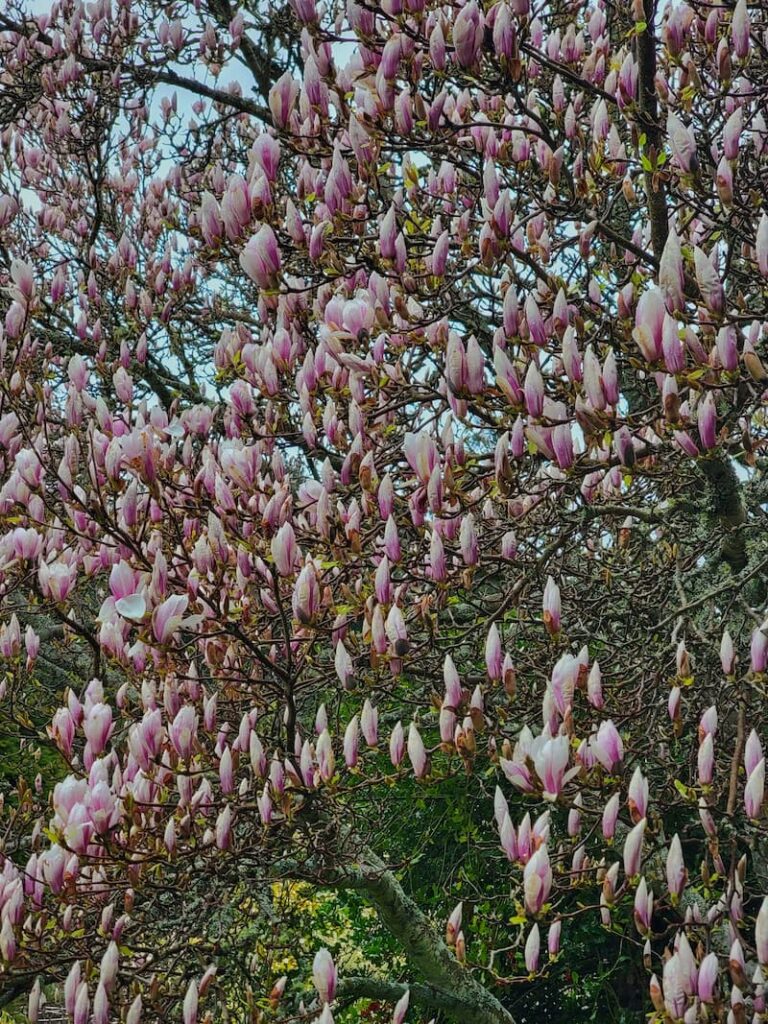
This magnolia tree isn’t officially in my garden but I enjoy it every morning on my daily walk.
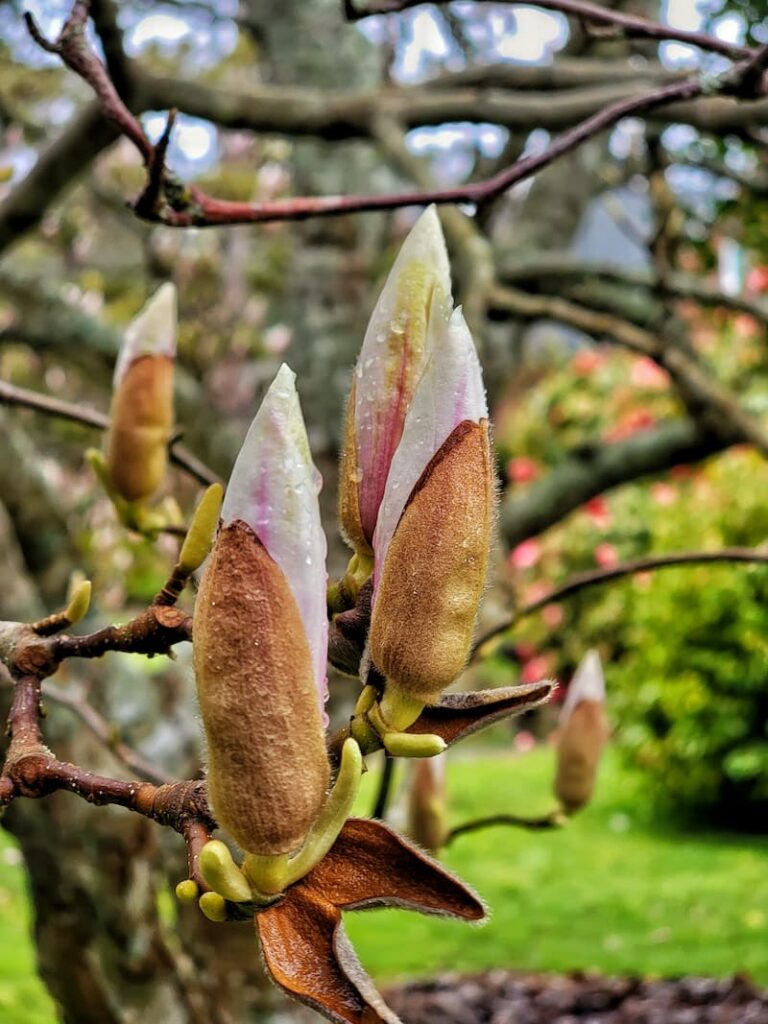
Pink-blooming trees in spring are my favorite.
Rhododendrons and Azaleas
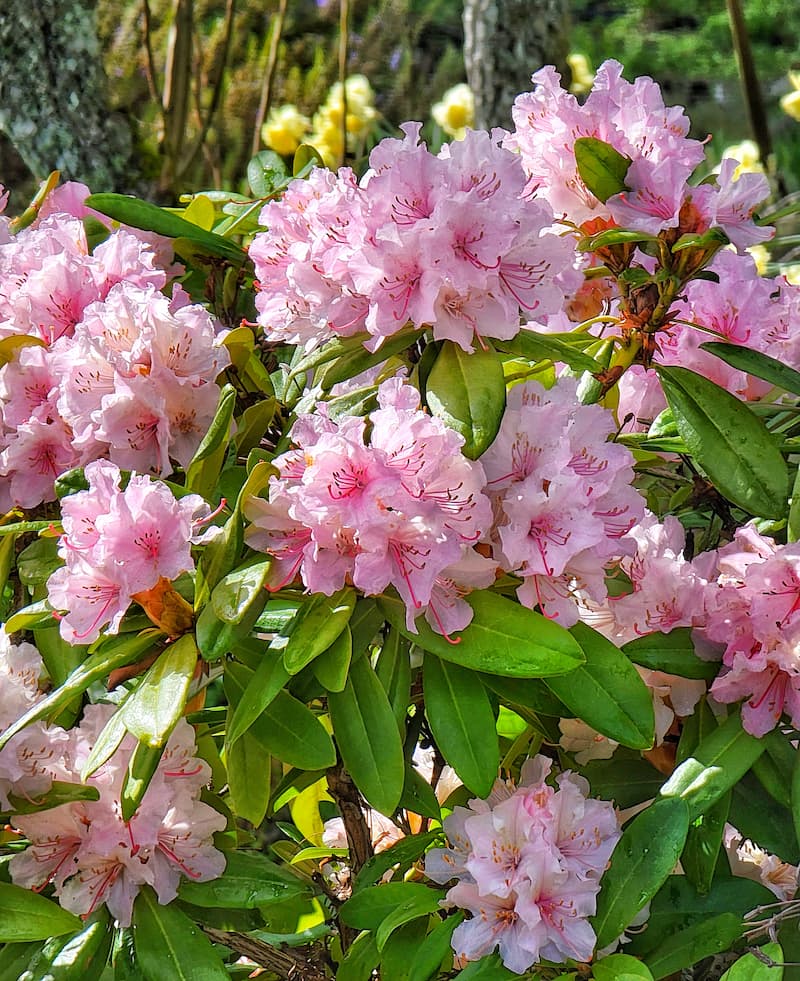
We have a rhododendron and azalea garden space across from the greenhouse garden. The trees and shrubs all bloom at different times during the spring season.
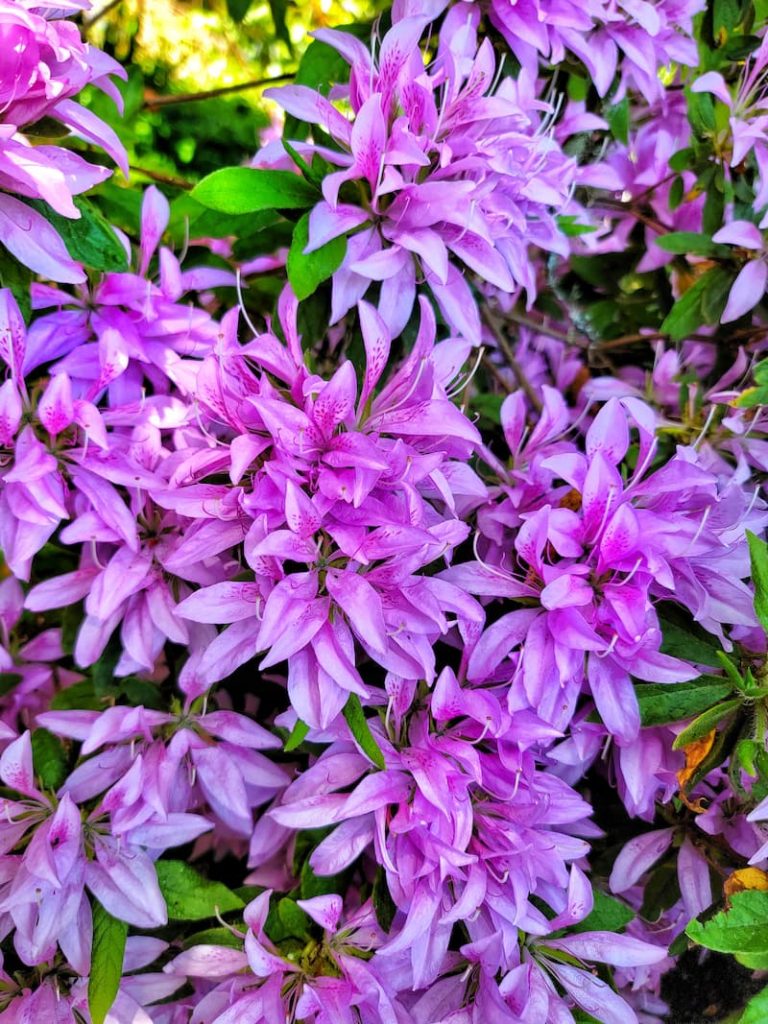
Azaleas tend to have smaller, more delicate blooms and come in just about every shade of pink, coral, purple, and white.
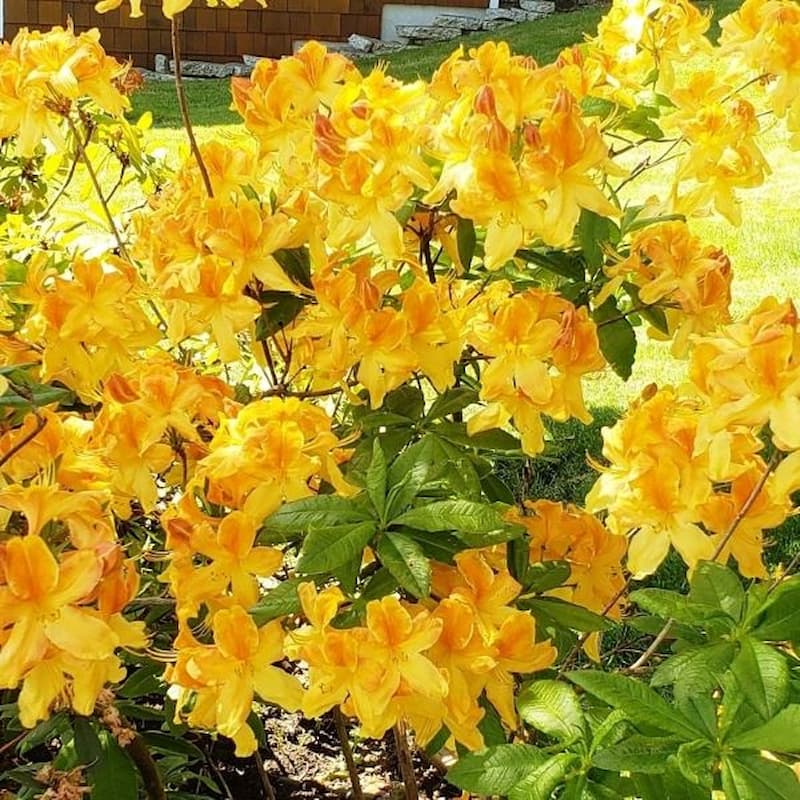
They’re perfect for adding a soft, romantic feel to garden borders or shady spots under trees.
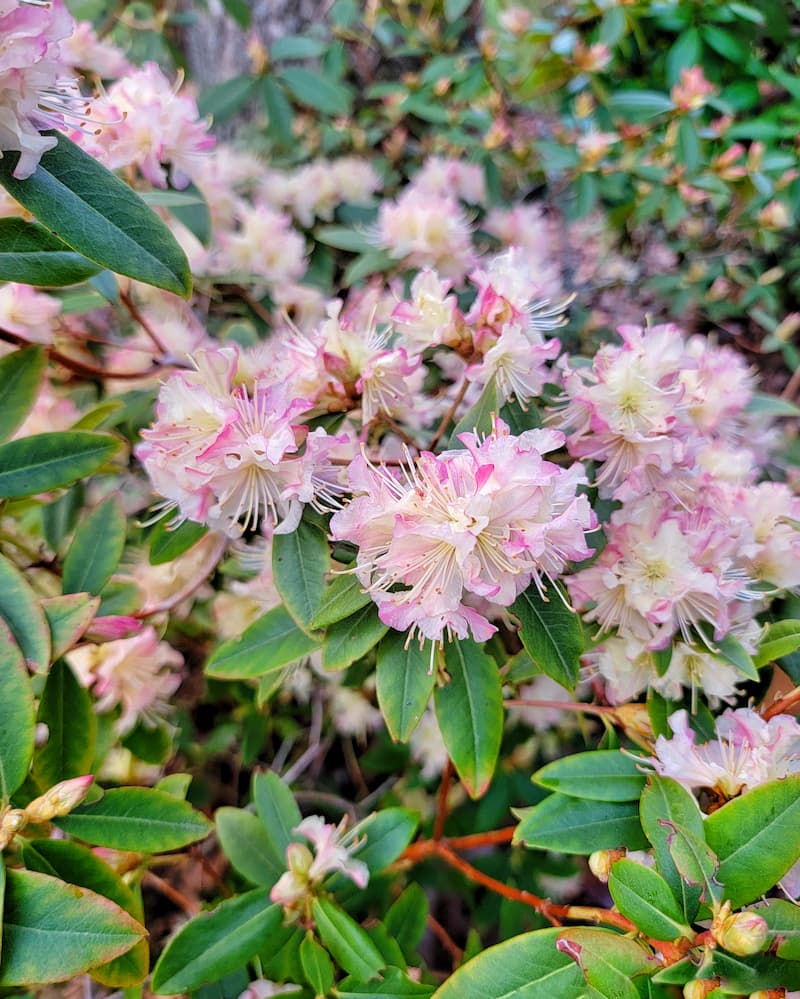
I love how they can be planted in groups for a big splash of color or tucked into small corners for a little spring surprise.
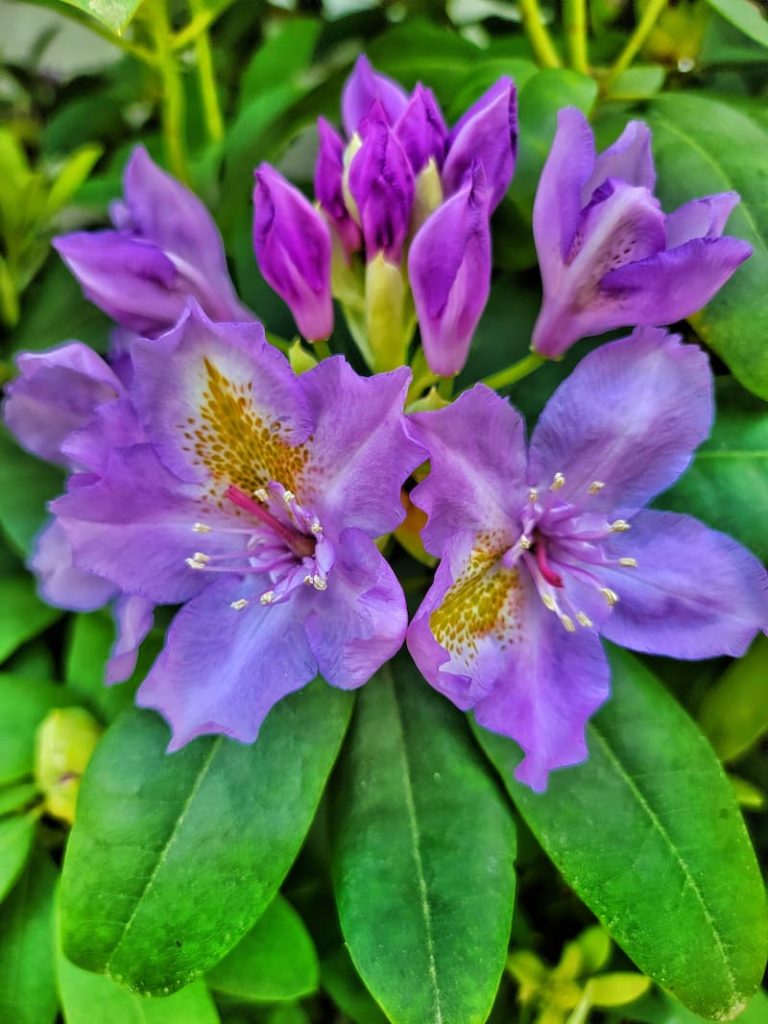
Rhododendrons, on the other hand, have larger, bold blooms that make a statement. Their clusters of flowers are like giant bouquets right on the plant, and their evergreen leaves keep them looking pretty year-round.
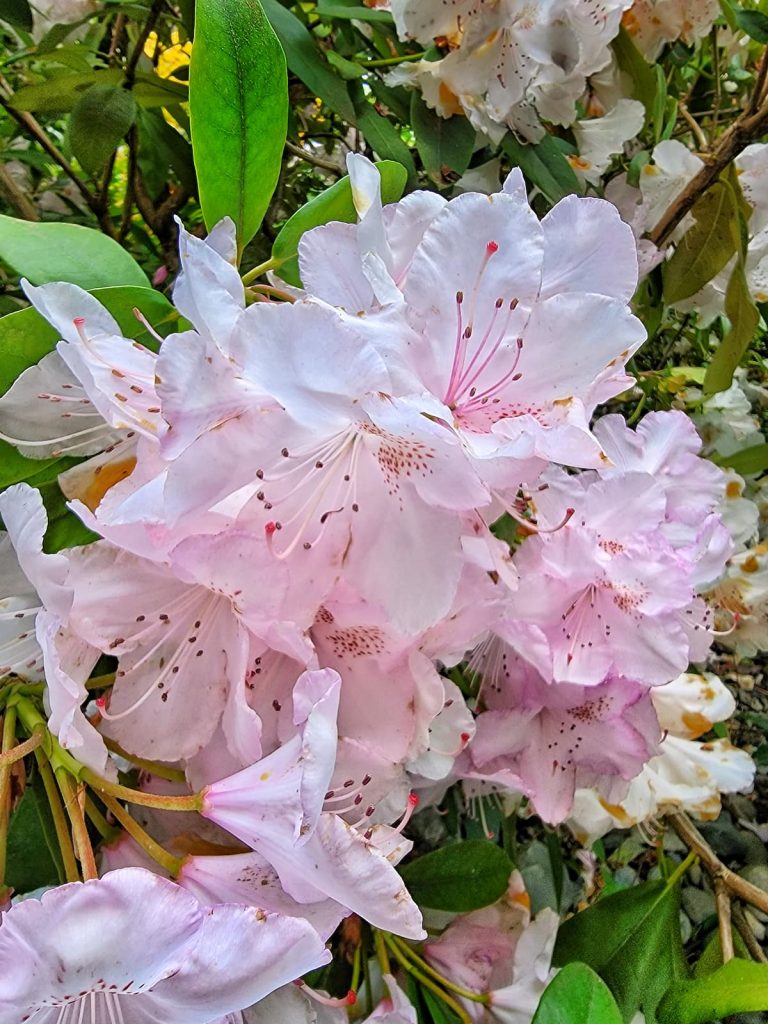
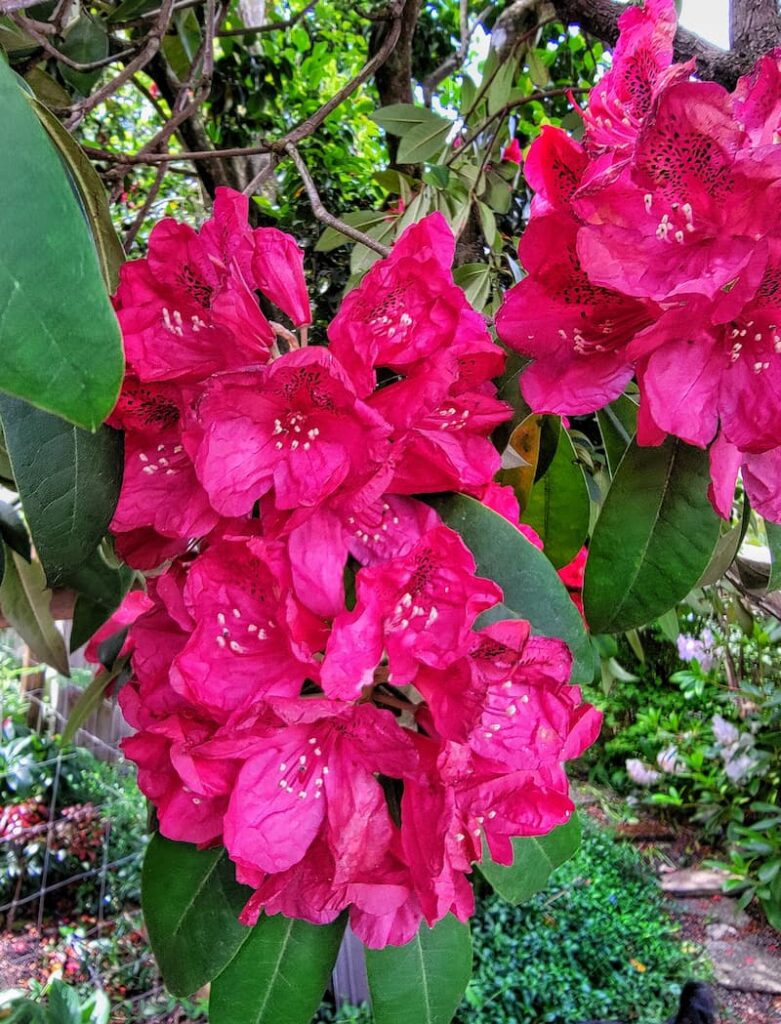
Rhododendrons are perfect for adding structure and drama to the garden, and when they’re in full bloom, they really do steal the show.
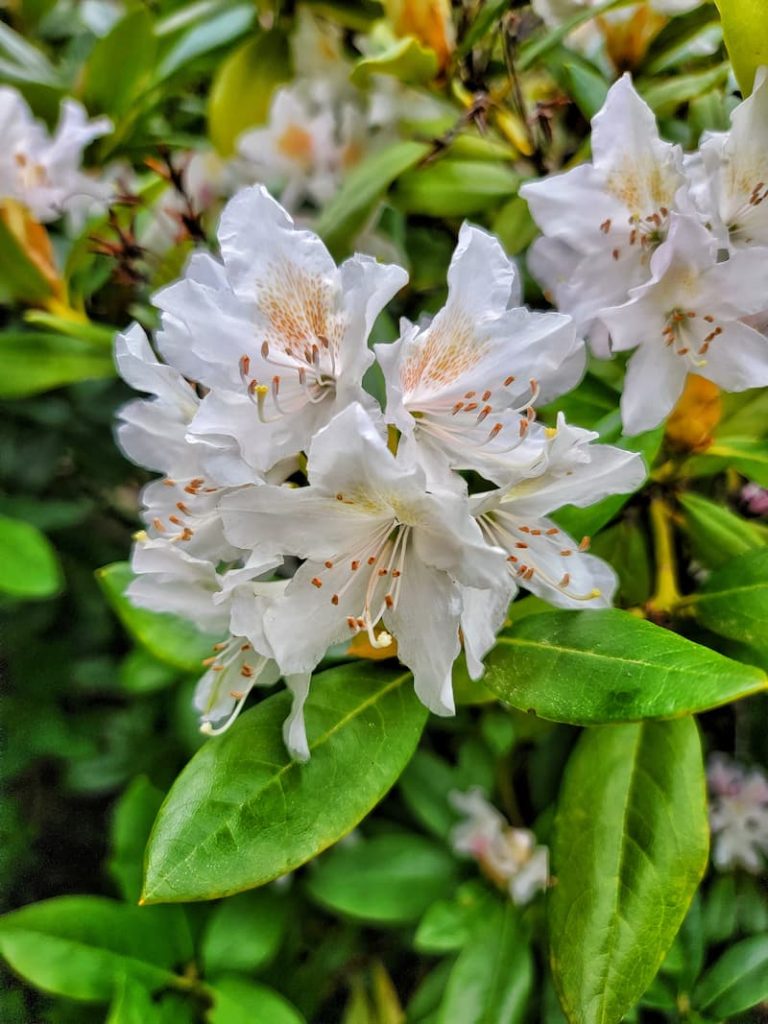
Both azaleas and rhododendrons thrive in part-shade and acidic soil, and once they’re established, they’re low-maintenance and reliable.
Whether you have room for a large rhododendron hedge or just a couple of azaleas to brighten a shady corner, these spring classics are always worth the space in the garden.
Camellia Japonica
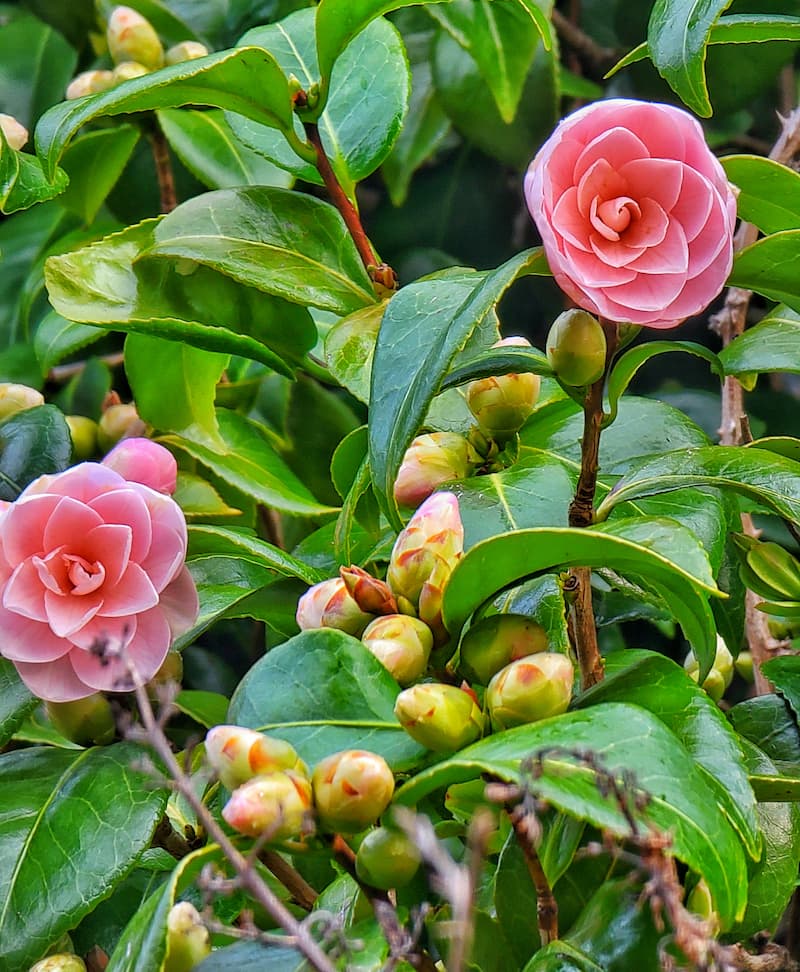
Depending on the variety, camellias can bloom from late winter into early spring, bringing gorgeous, rose-like flowers in shades of pink, red, and white.
Their glossy, dark green leaves stay beautiful all year long, and when those flowers open, they almost look too perfect to be real.
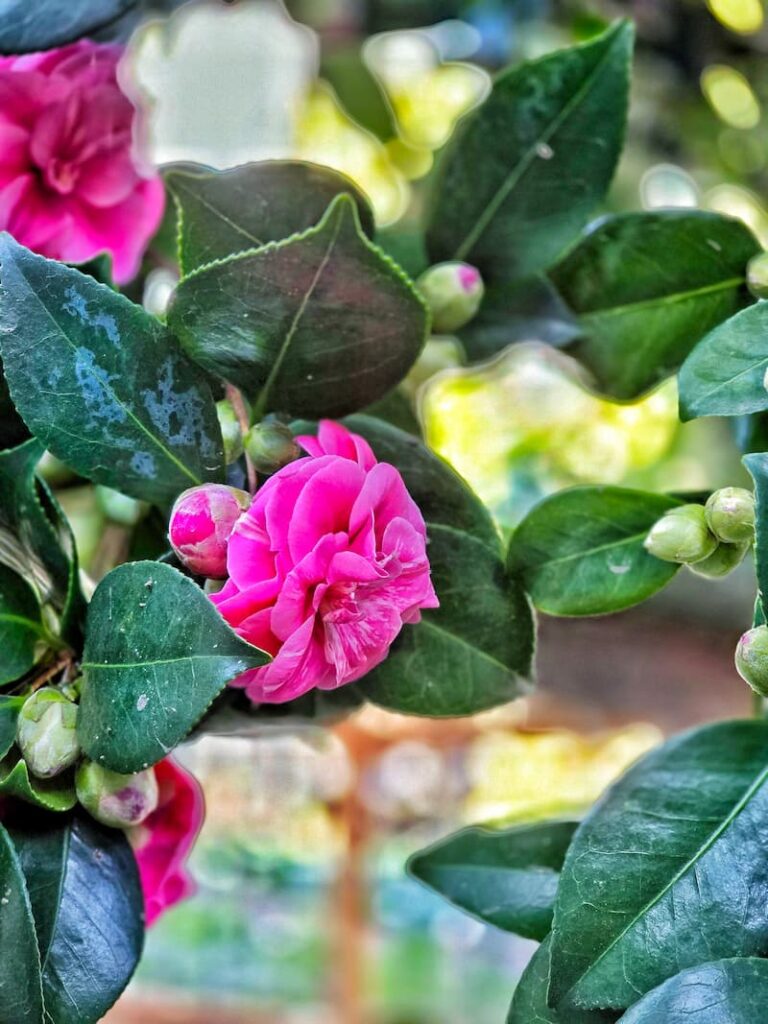
Whether you have a single tree or a small grouping, camellias add charm to the garden, especially in shady spots where other flowers might struggle.
They do well in part-shade with well-drained, slightly acidic soil, and once they’re settled in, they’re pretty low-maintenance.
The Greenhouse and Seedlings in Early Spring
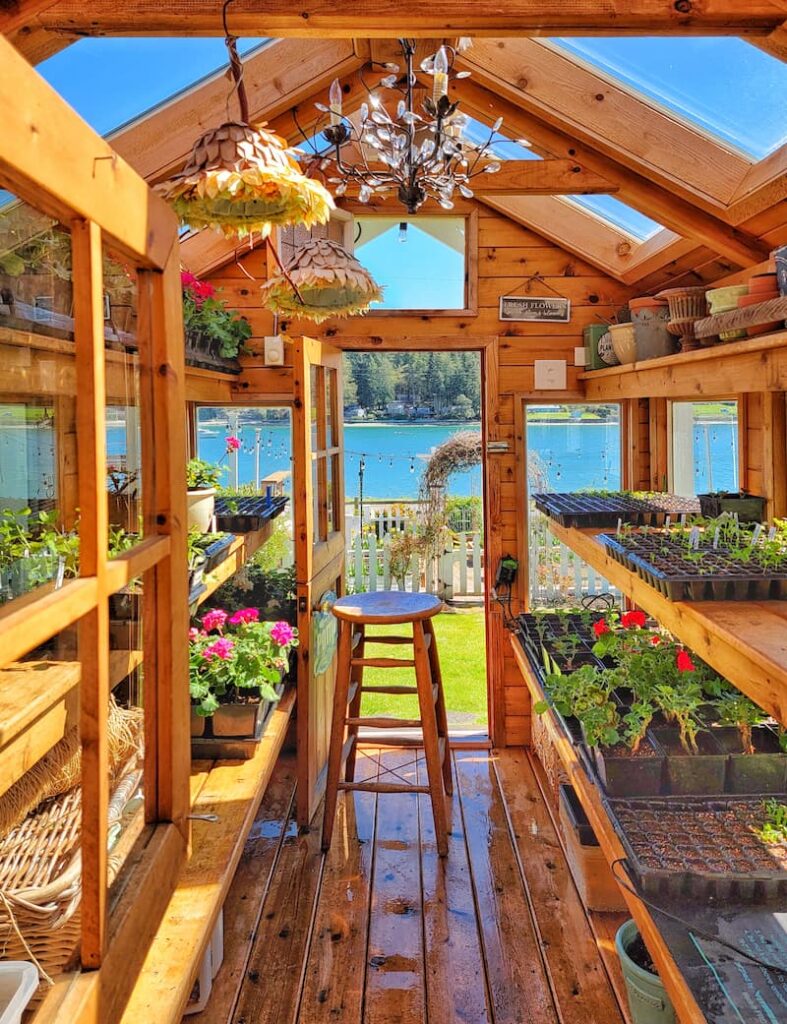
I spend a lot of time in this greenhouse. There’s quite a bit of garden therapy that happens in this space. This gives you a glimpse into the growing season ahead.
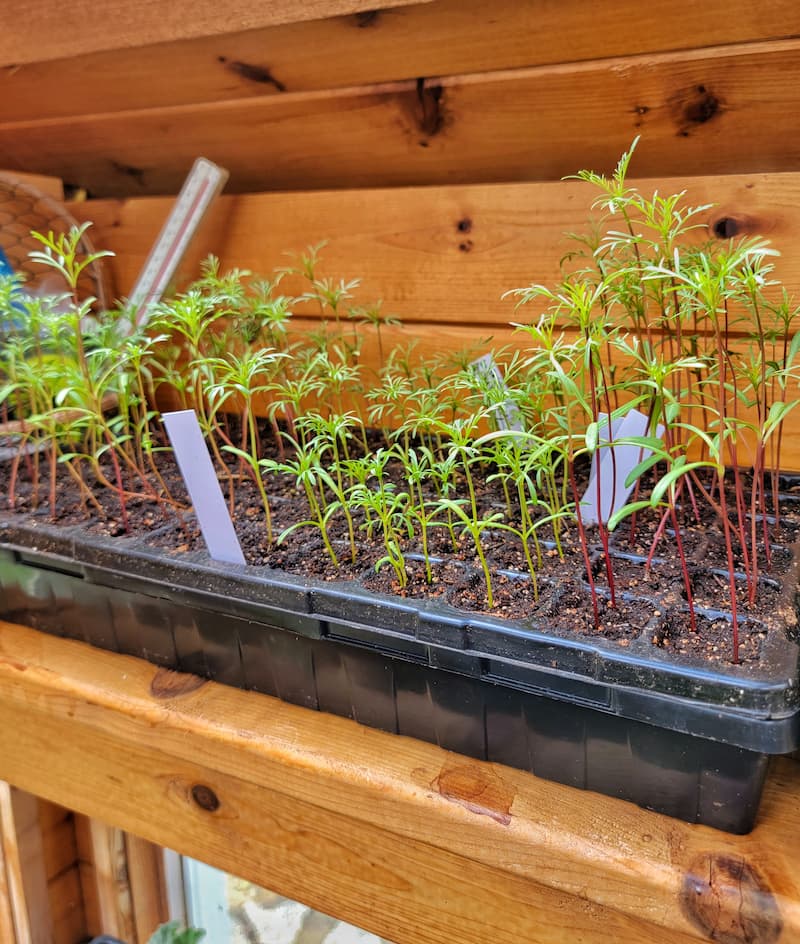
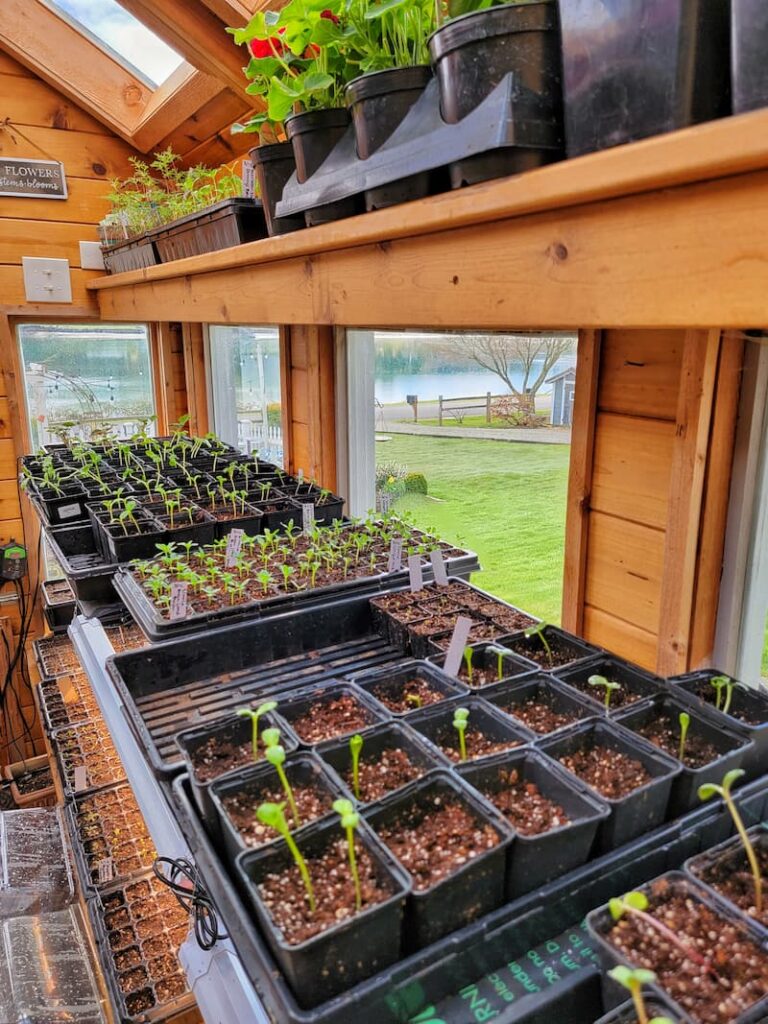
Every year I start my seedlings in the greenhouse at the end of January.
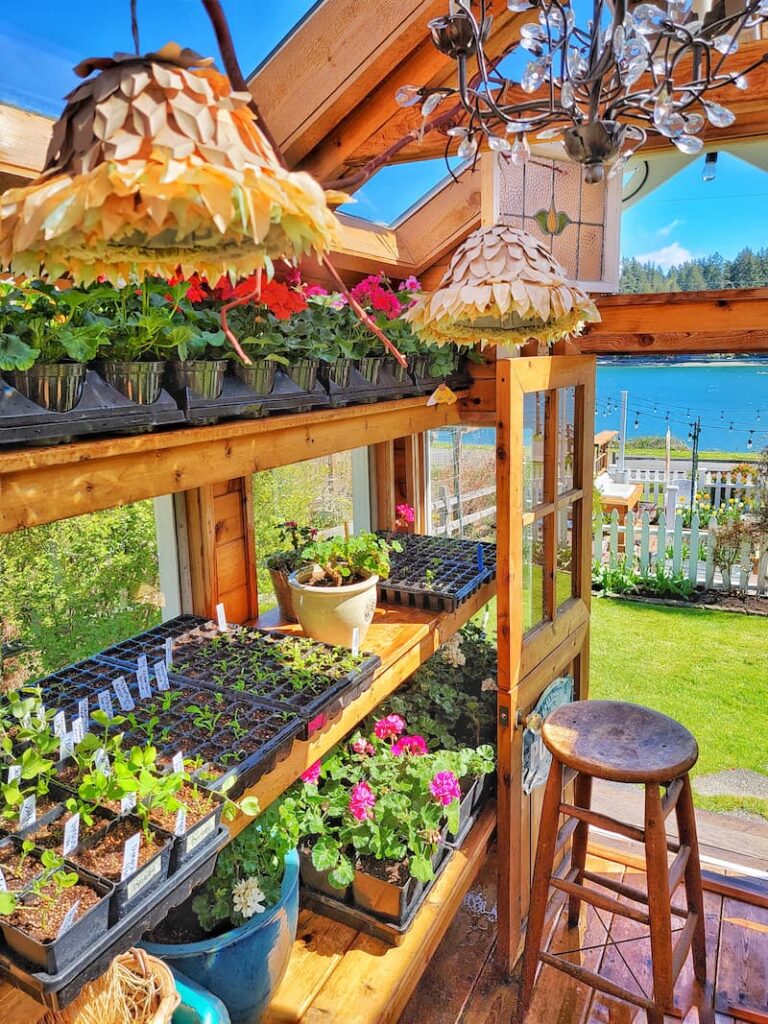
I’m growing a lot of summer annuals in my cut flower garden this year, including, sweet peas, zinnias, cosmos, snapdragons, strawflowers, and sunflowers.
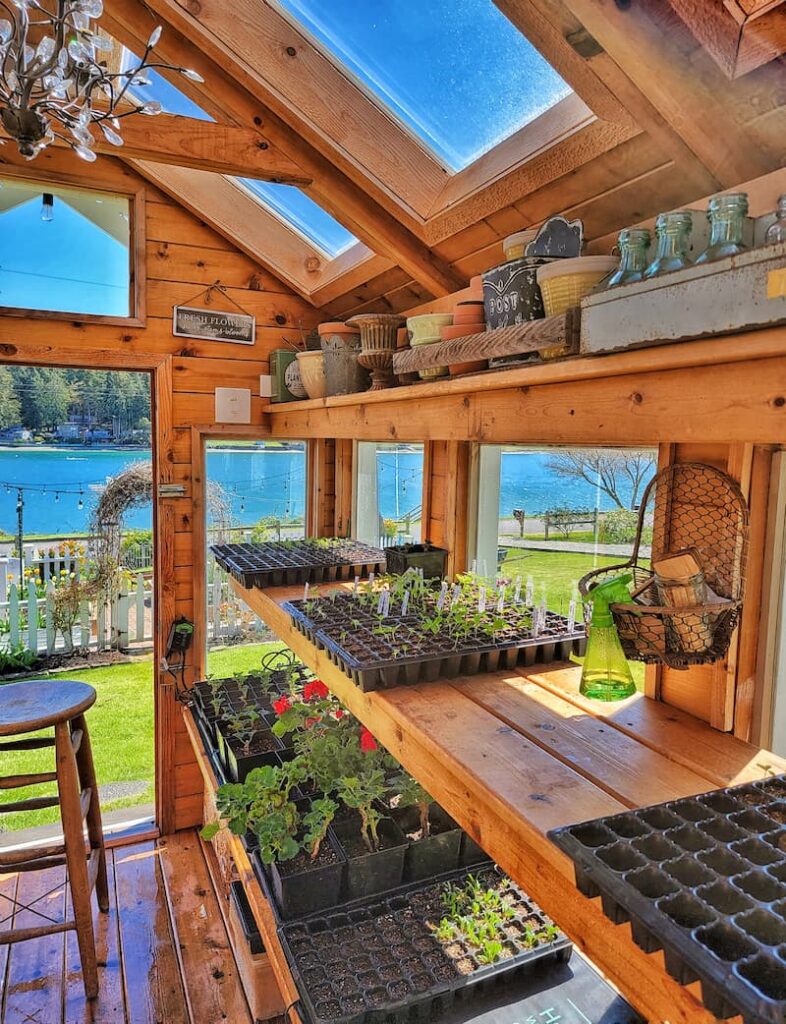
We also overwinter and propagate geraniums in the greenhouse. As you can see, there is literally no space left.
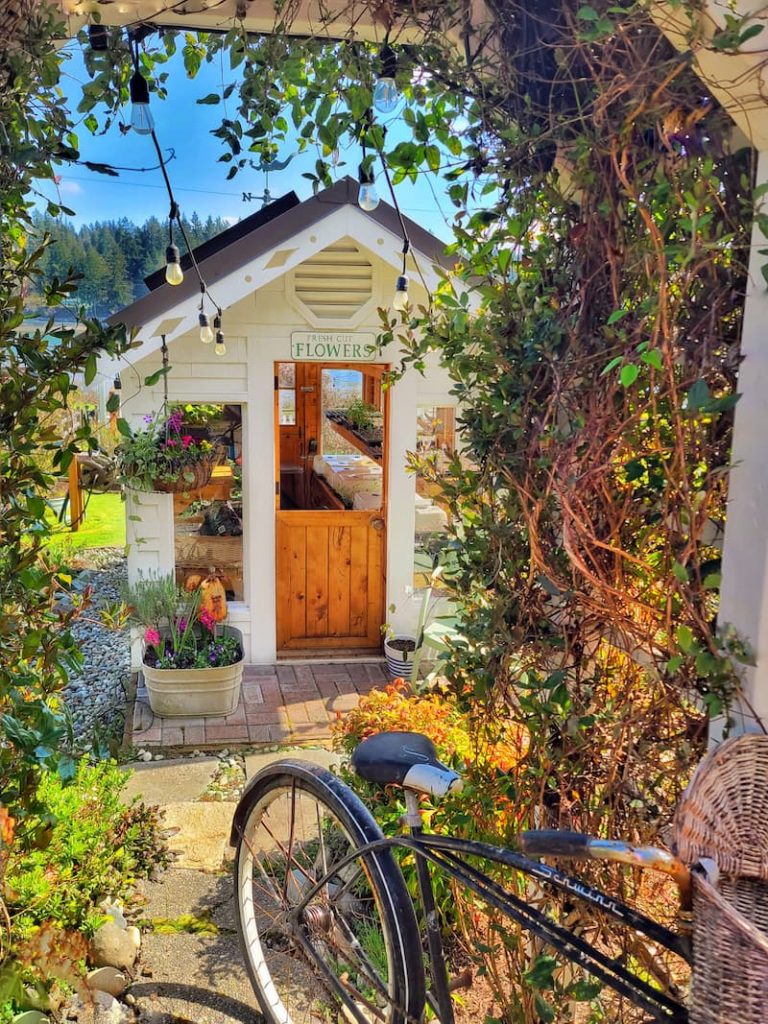
I’ll start hardening off my seedlings in a few weeks before transplanting them into the raised bed garden.
Spring To-Dos Around the Garden
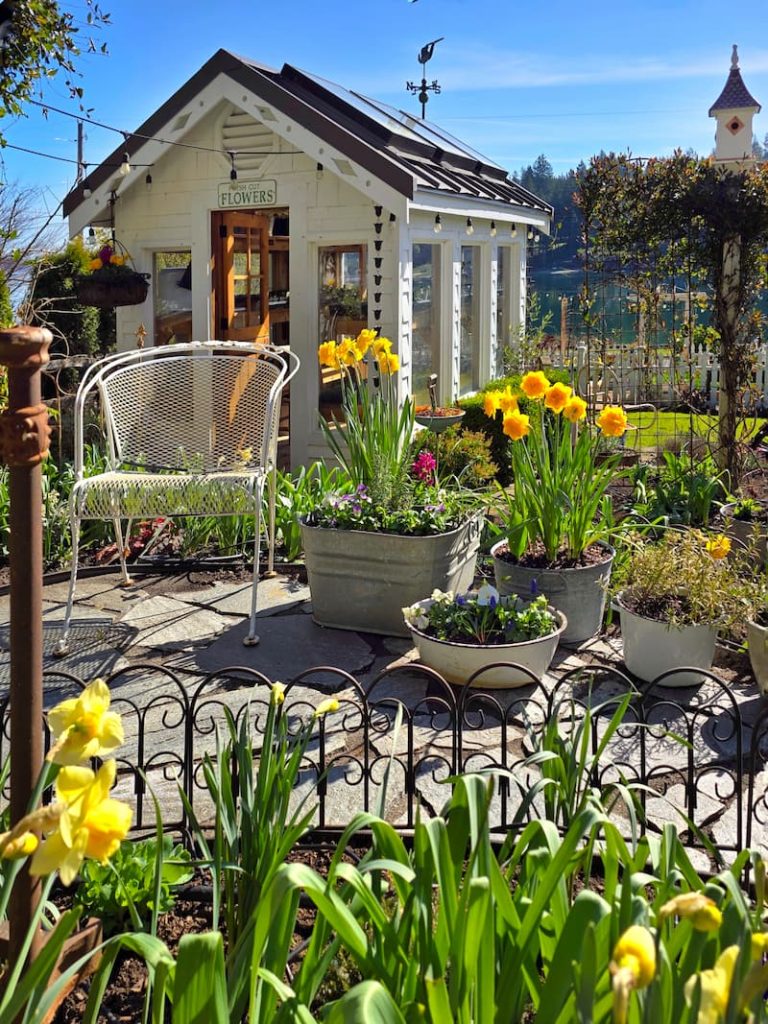
March and April are very busy months in the garden with so many things to take care of so your summer garden will thrive. Here’s what I’ve been up to.
Cutting Back Outdoor Ferns
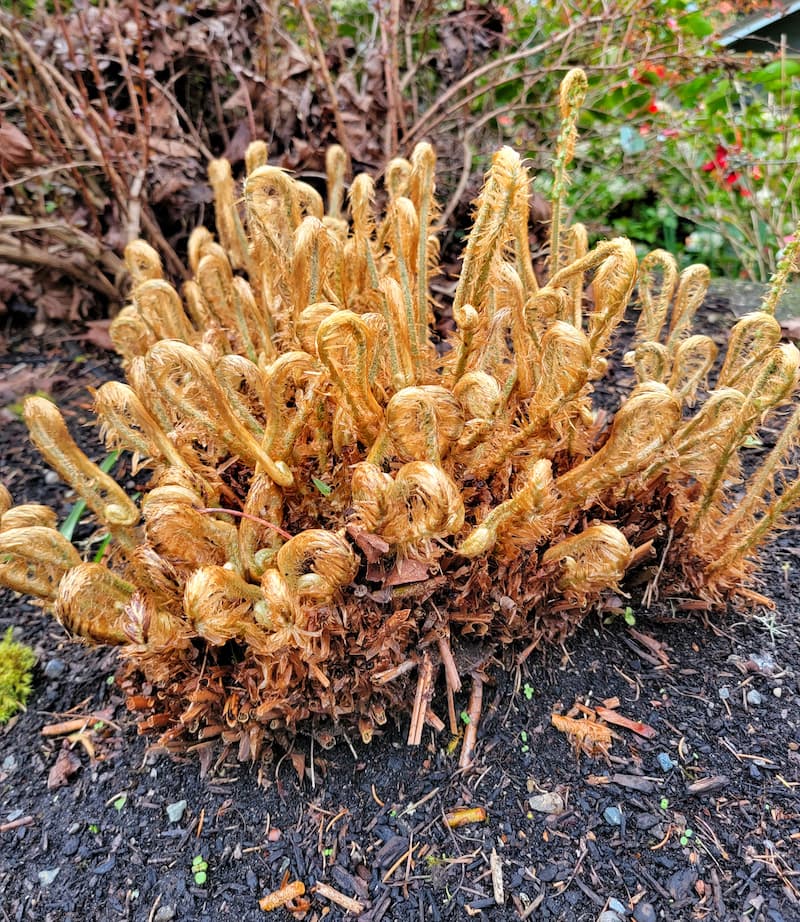
Cutting back outdoor evergreen ferns in early spring will give you brand-new fresh fronds for the growing season.
Dividing Perennials in the Garden
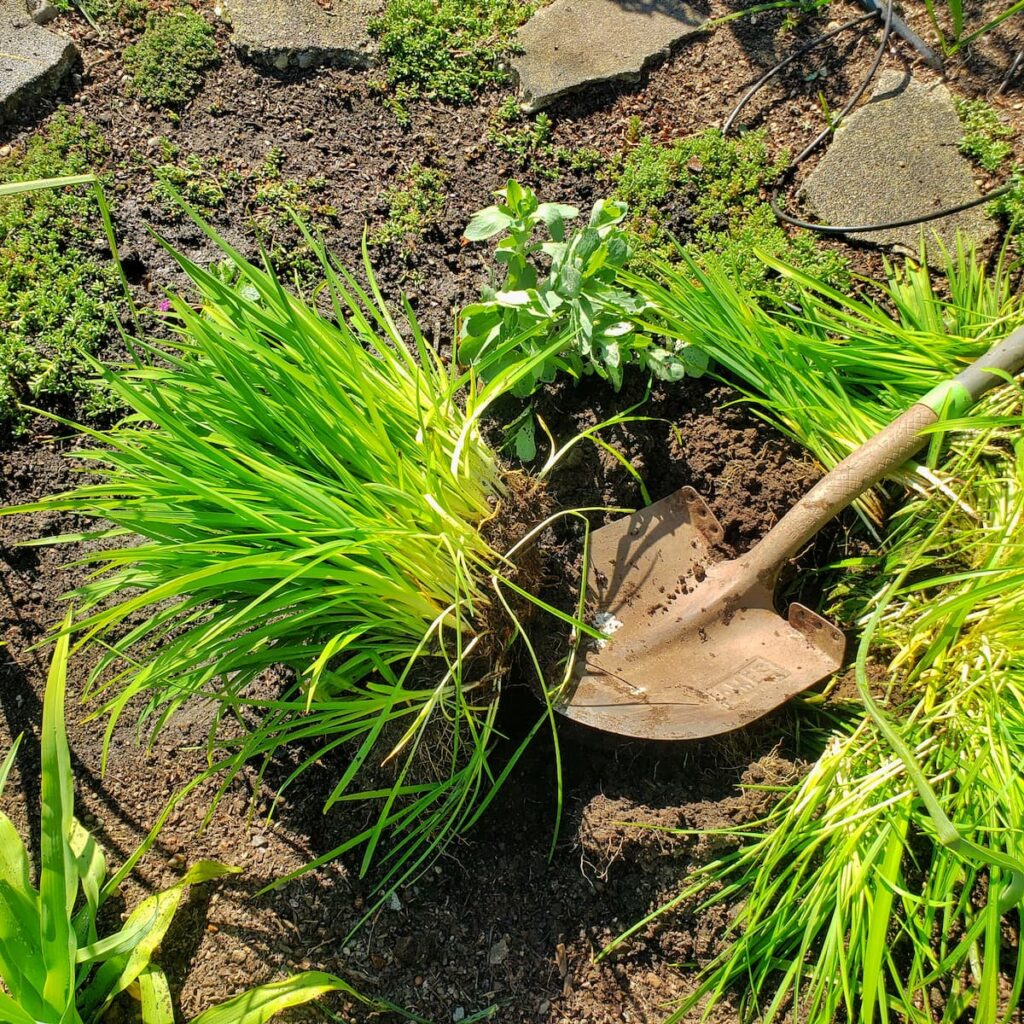
Early spring is the perfect time to divide and transplant your overgrown perennials in the garden.
It’s not only a great thing to keep your plants healthy, but it’s a wonderful way to create new plants for the garden without having to pay for them.
Splitting Dahlia Tubers and Transplanting Into the Garden Beds
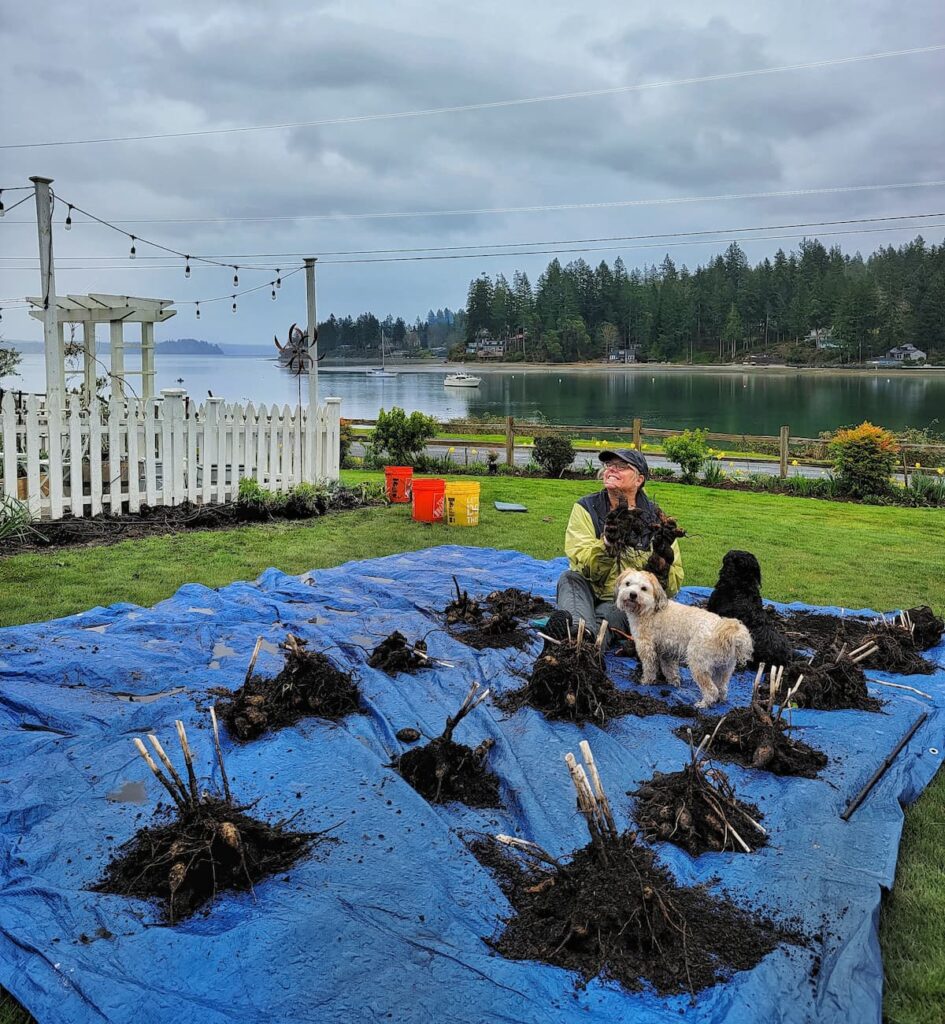
Every April, I dig my dahlia tubers out of the ground and split the tuber clumps so they are healthy and maintain the plant’s proper size.
Adding Fish Compost to the Garden Beds
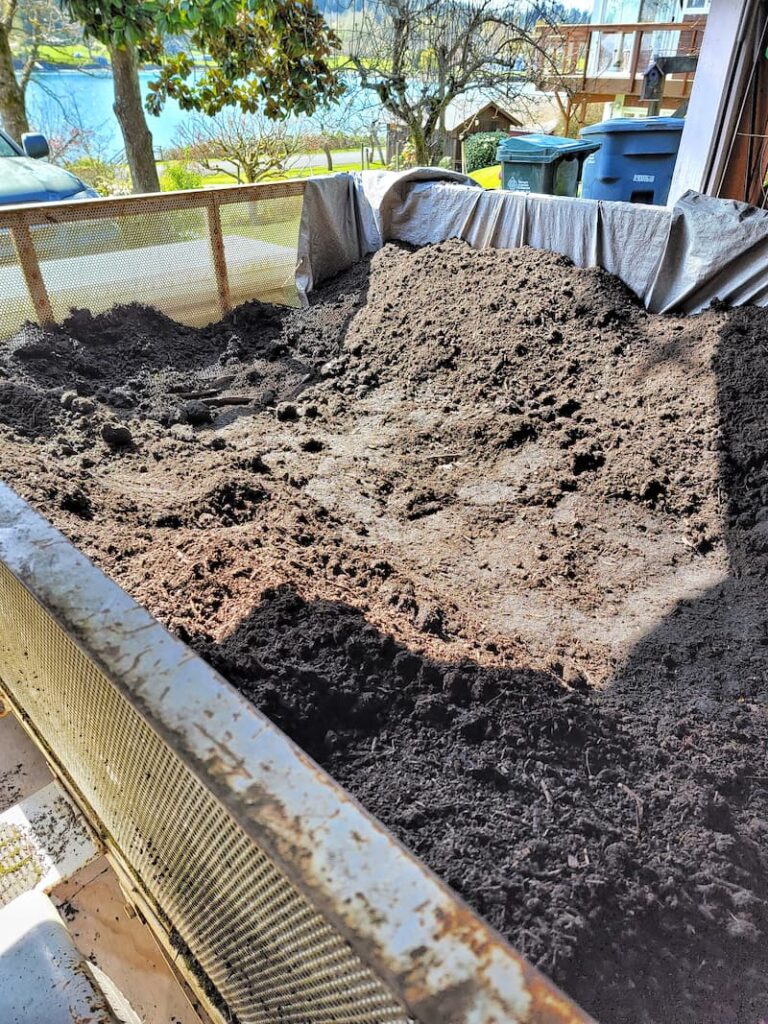
We spread two yards of fish compost in the garden beds every spring to give the soil the proper nutrients for our garden plants and flowers.
Fish compost is a soil additive that is high in nutrients and weed-free. And in case you were wondering, it does not have a fish odor!
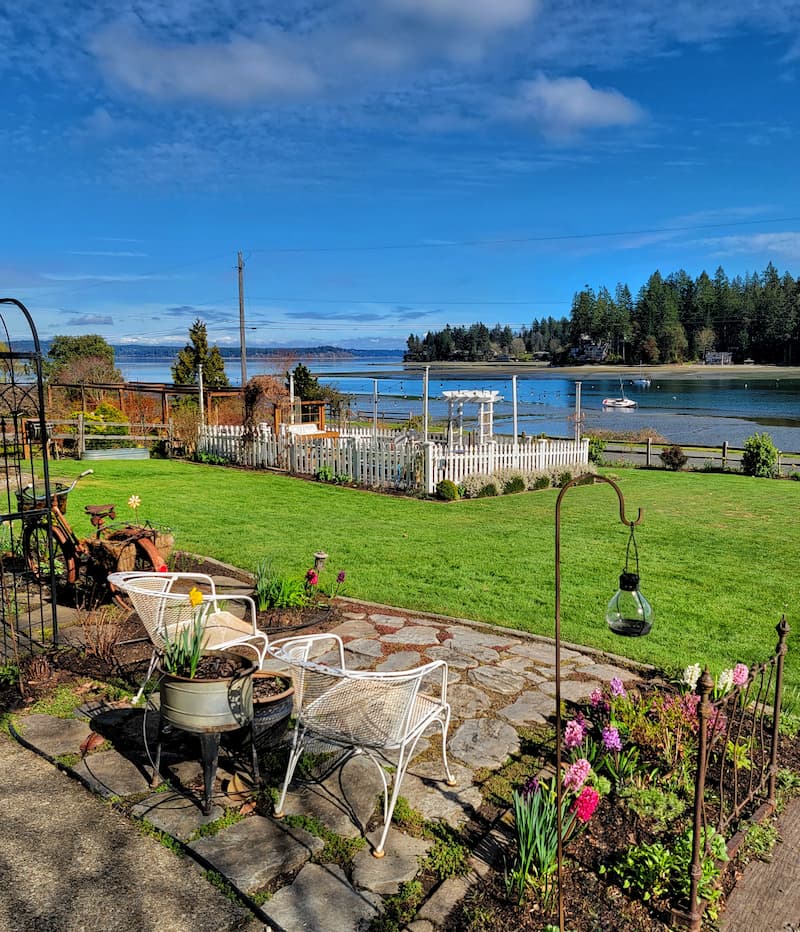
There’s something special about the early spring garden. Those first blooms that remind us winter doesn’t last forever and brighter, warmer days are on the way.
From tiny crocuses and sweetly scented hyacinths to the bold color of azaleas and the graceful beauty of camellias, every flower feels like a little celebration.
I hope this little peek at what’s blooming in my early spring garden has inspired you, whether you’re planning for next year or just enjoying what nature has to offer right now. I’d love to know what’s blooming in your garden. Let me know in the comments.
And don’t forget — the best part of spring is that there’s always more to come.
Until next time,
Happy Spring Gardening!

I’m a self-taught hobby gardener. Everything I share on my blog is my opinion and what has worked for me.
MORE POSTS
For You To Enjoy
Follow Me for More Inspiration
Shop my Amazon Storefront, LTK sources, and my favorite home decor, garden, and lifestyle products. When you purchase from one of my links, I earn a small commission, which helps me continue sharing all the content you expect on my blog.
Be sure to follow me on Pinterest, Instagram, Facebook, TikTok and LIKEtoKNOW.it. Do you like gardening? Join my Facebook Gardening Tips & Tricks group.

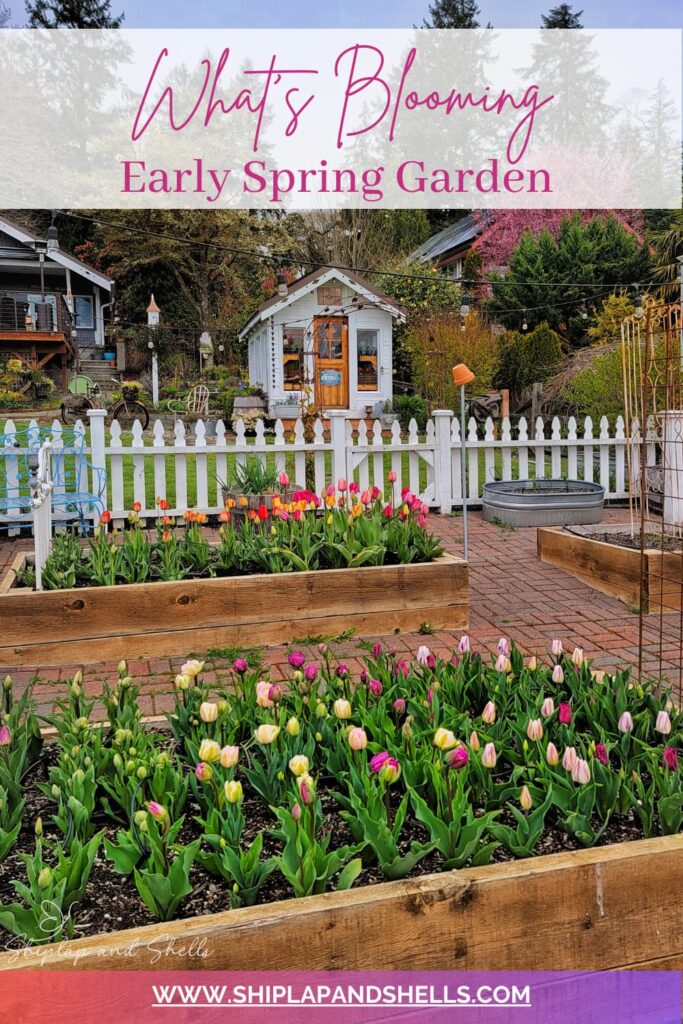

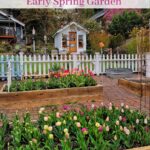
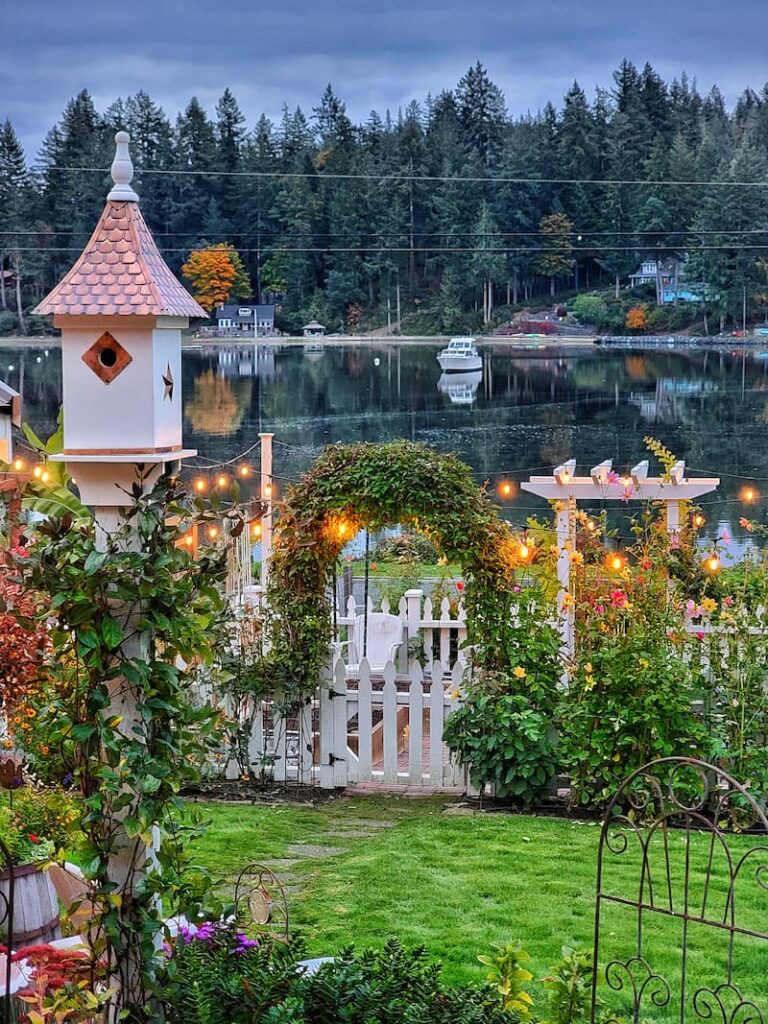
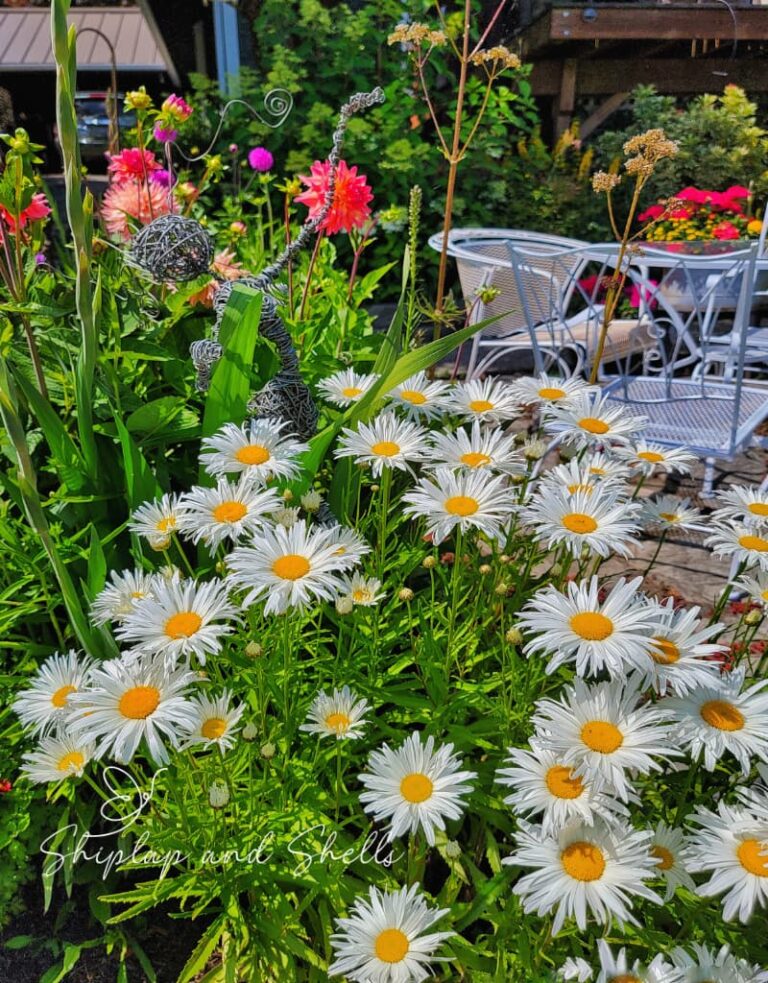
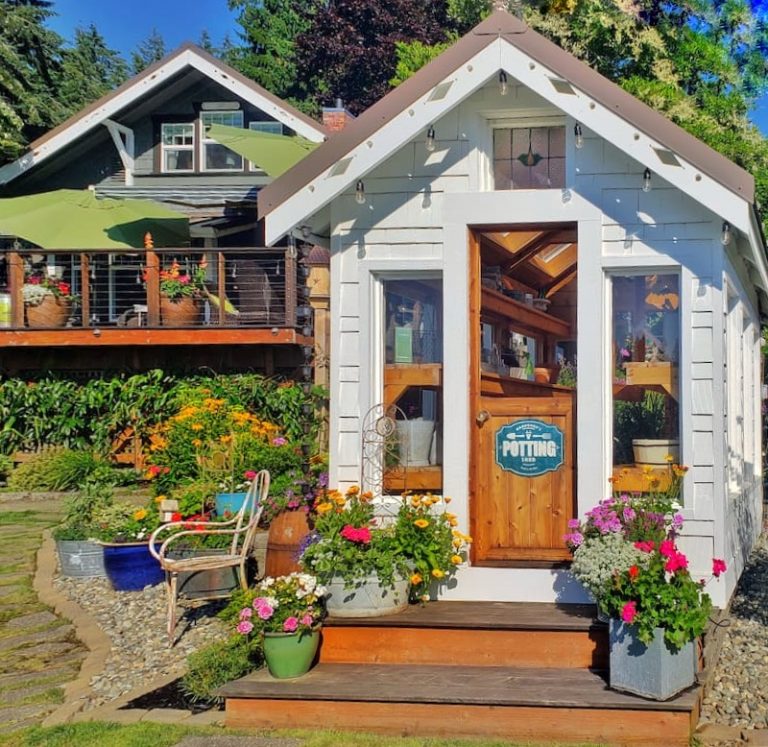
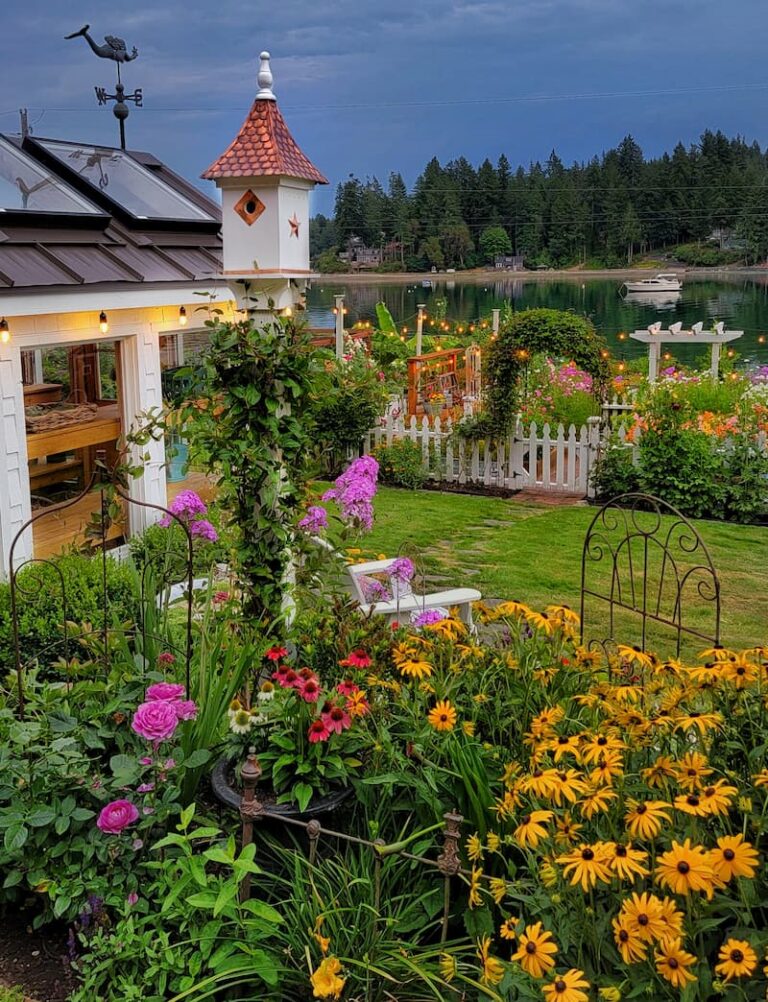
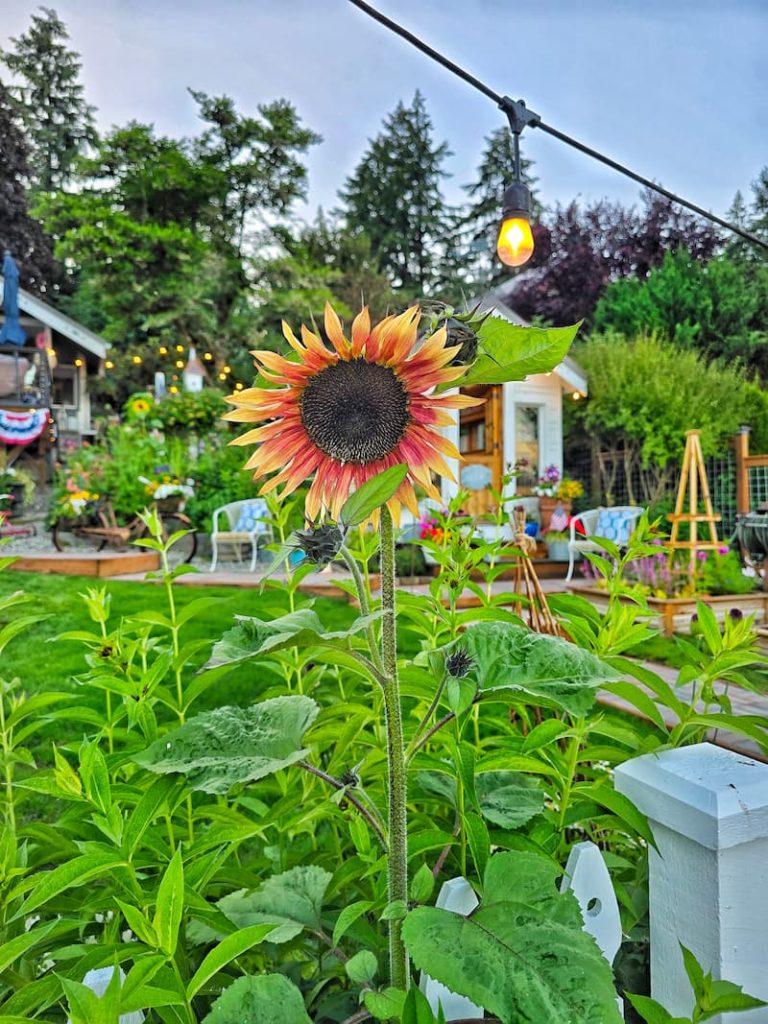
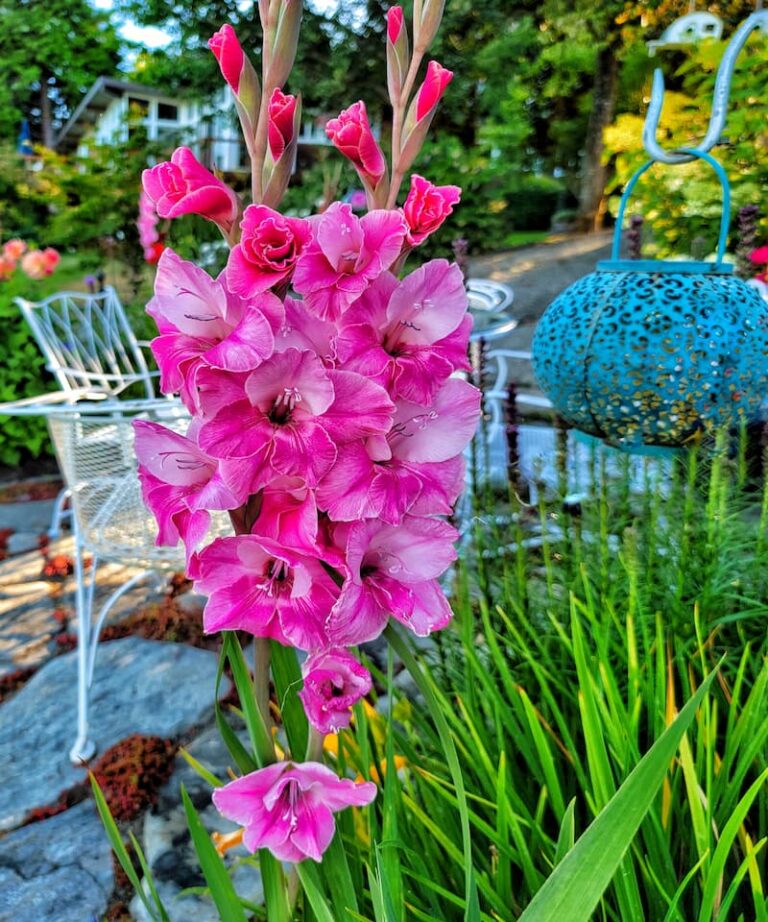
Love the tour! It looks so pretty right now!
The tulip beds look so pretty!